Antique Photos of People Doing Funny Things
1 / 51
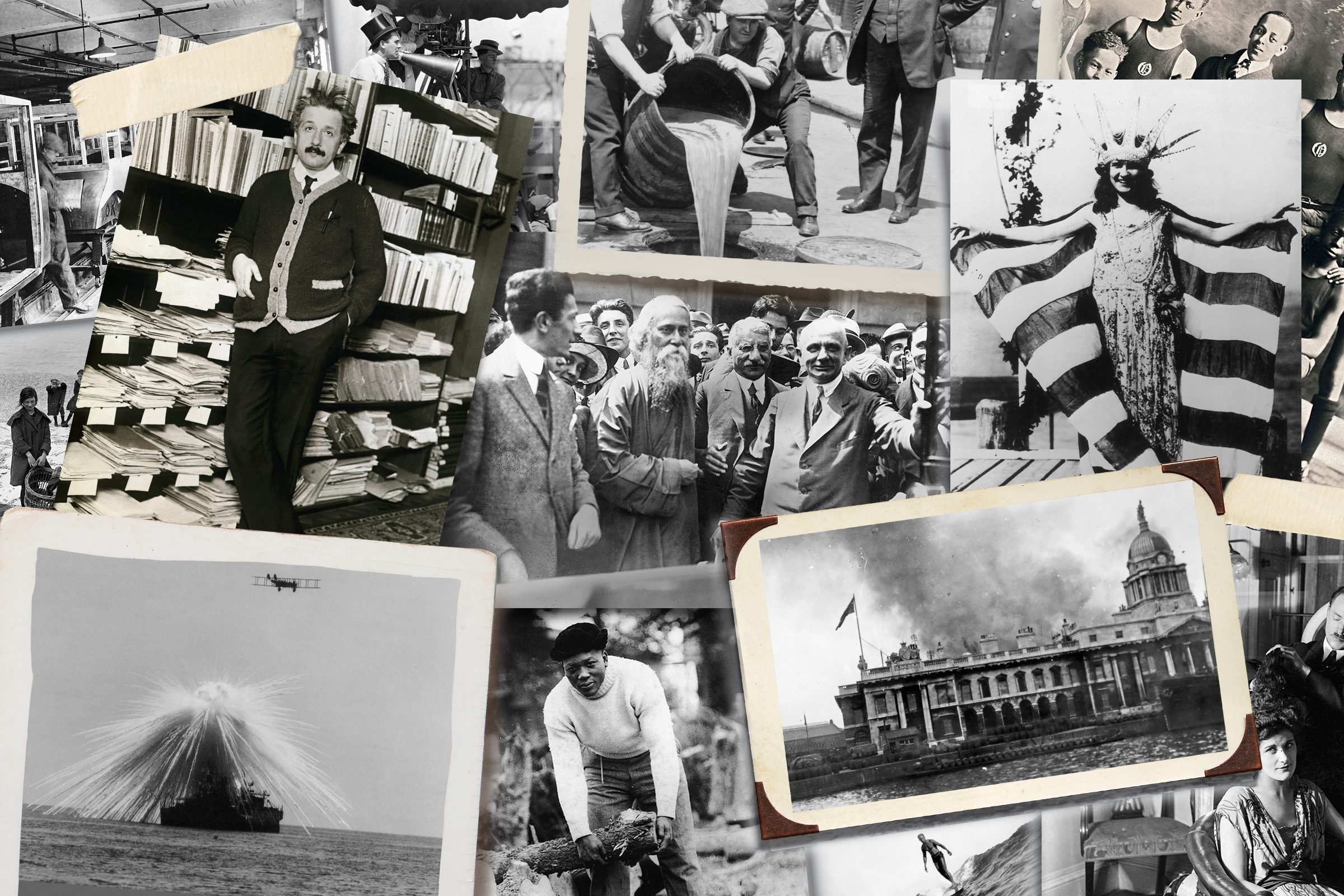
Historical photos bring the past closer
Since photography was invented in the 1830s, we've marveled at the creativity and timing it takes to produce a perfect picture. Now that we've all got computers in our pockets, finding funny photos or taking an amazing nature photo is easier than ever before. Photographs can even change our mood: Creepy photos might make us shiver, while some relaxing photos can zap us to an instant state of calm. Most of us humans are pretty visual creatures, and there's no doubt that seeing historical photos of events in the past makes them feel much more real than simply hearing the story. For understanding what life was like 100 years ago, these pictures can't be beat.
2 / 51
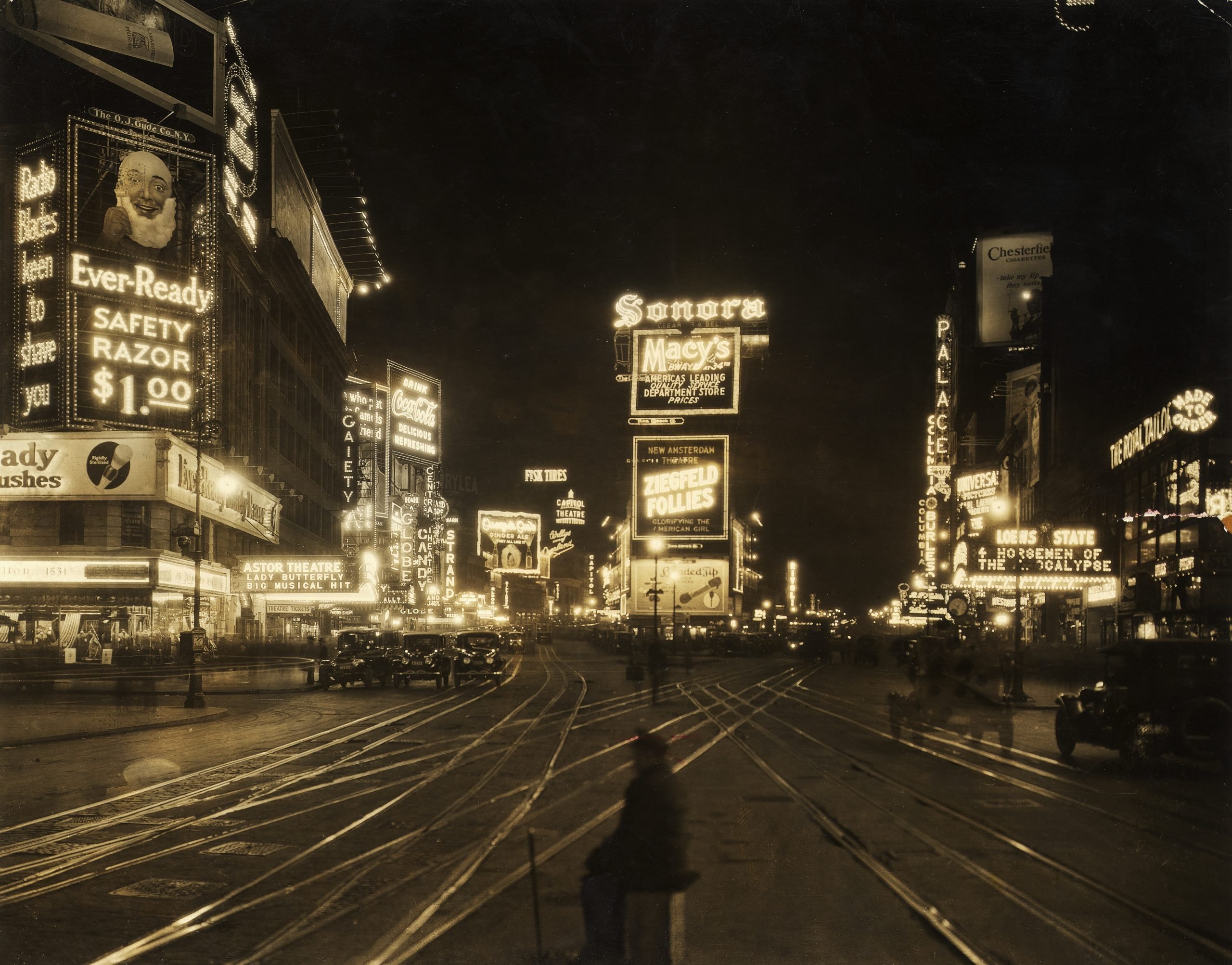
Times Square, 1921
One of the most famous subjects for a historical photo, Times Square has been called the Crossroads of the World. That name might be more accurate because Times Square isn't even a square. It's more of an intersection, encompassing the area where Broadway crosses over Seventh Avenue, from 42nd to 45th St. This historical photo, looking northward from 45th St., shows the classic bright lights of Times Square, an ongoing illumination of the city since the first electrified advertisement in 1904. Times Square was originally called Longacre Square but gets its name from the old New York Times building, a tower at 1475 Broadway which served as the headquarters of the Times from 1904-1912. It has always been a gathering place since before it hosted the first New Year's Eve ball drop in 1907.
RELATED: Coronavirus Pandemic Photos
3 / 51

Mahatma Gandhi
The year 1921 was an extremely important year for Gandhi and his civil rights work. This was the year he became leader of the Indian National Congress, leading national campaigns against poverty and untouchability, and fighting for women's rights and an end to British colonial rule. This historical photo shows 51-year-old Gandhi looking youthful in a colonial suit and tie, but in September of 1921, he switched to the loincloth and shawl worn by the poorest citizens of India in symbolic identification.
4 / 51
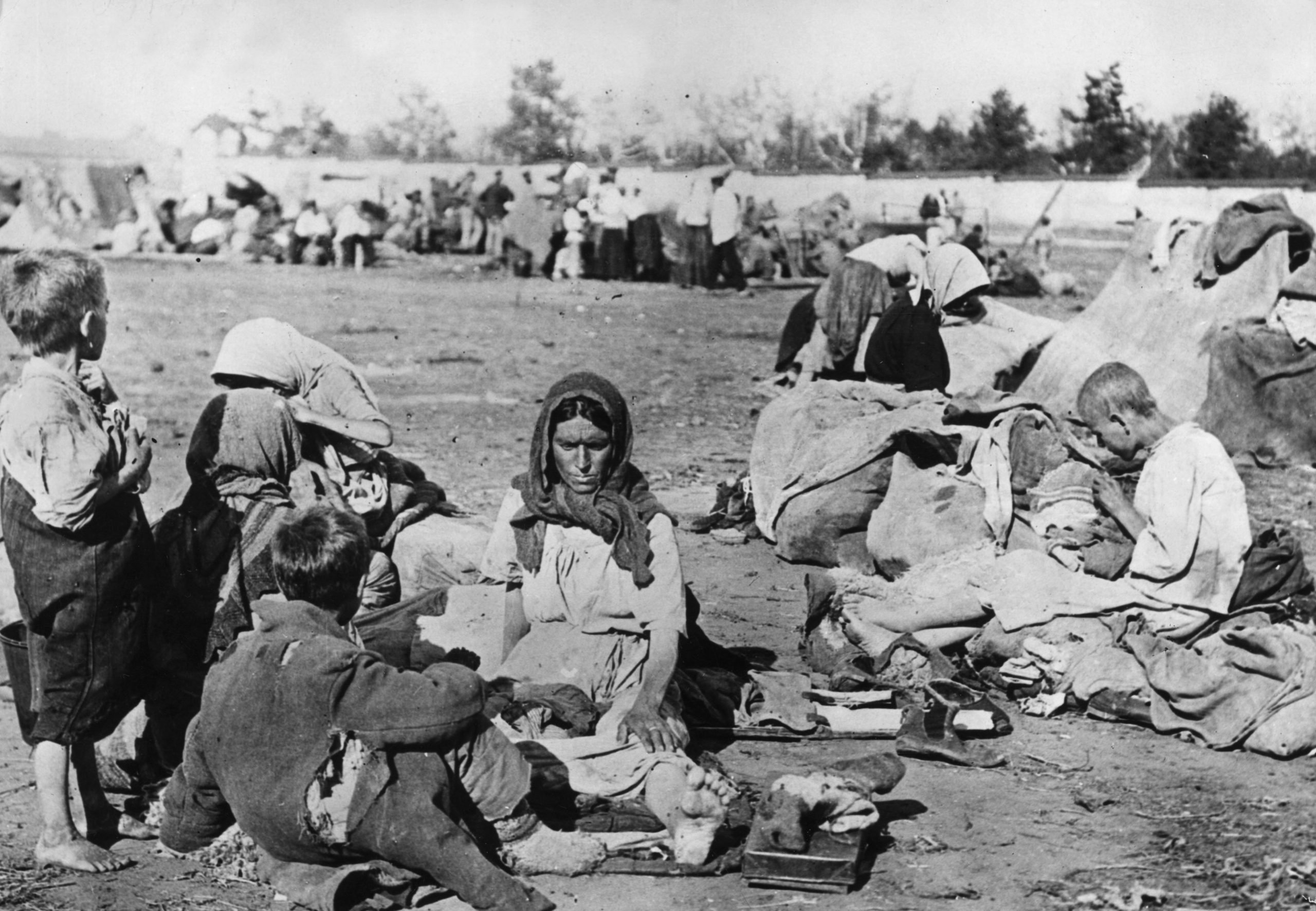
Russian families during the Russian famine
Russia suffered through two wars between 1914 and 1920—World War I and then the Russian Civil Wars which followed the Russian Revolution. The resulting economic chaos was exacerbated by a drought in early 1921 and a severe famine fell upon the country, particularly in the areas surrounding the Volga and Ural rivers, the regions pictured in this historical photo. Some five million people are thought to have died, but many were saved by the efforts of the American Relief Administration, which Herbert Hoover had set up to help the many starving peoples of Europe after the devastation caused by WWI.
5 / 51
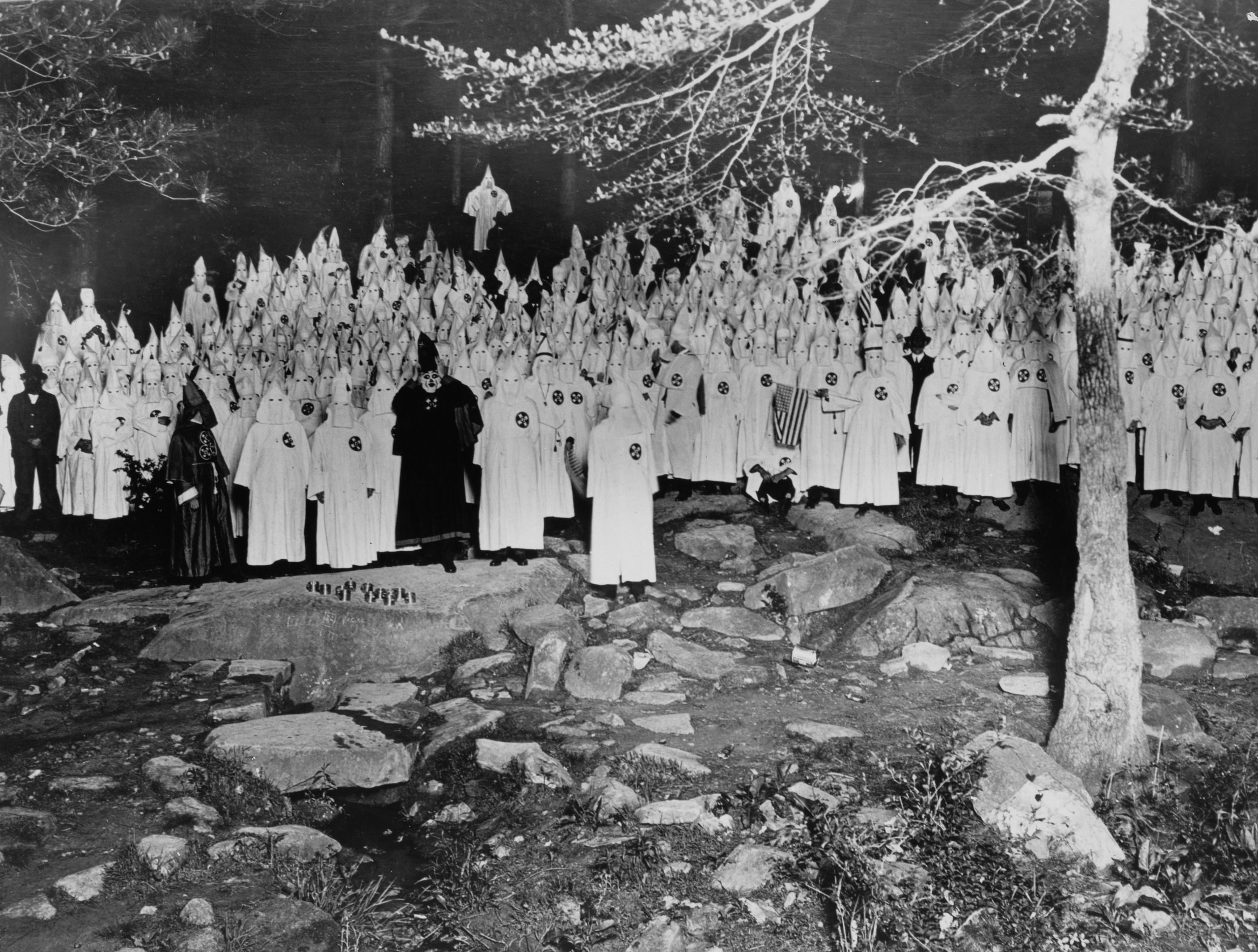
Ku Klux Klan meeting, Georgia
Stone Mountain, in northern Georgia, is many things: a beautiful geological formation, the largest memorial to the Confederacy in the United States, a park and tourist attraction, and the site where the second iteration of the Ku Klux Klan held their inaugural meeting in 1915. Klan membership grew throughout the 1920s, declining in the latter half of the decade after the leader of the Indiana KKK, D.C. Stephenson, was convicted of the horrific murder of a local White woman, Madge Oberholtzer. Martin Luther King Jr. invoked Stone Mountain as a symbol of these White supremacist movements in his famous speech "I Have a Dream," which features the line "Let freedom ring from Stone Mountain of Georgia." There is an ongoing debate in Georgia as to whether the park should remove the memorial, which many see as glorifying racism and hate.
RELATED: Important Photos Taken in Every State
6 / 51
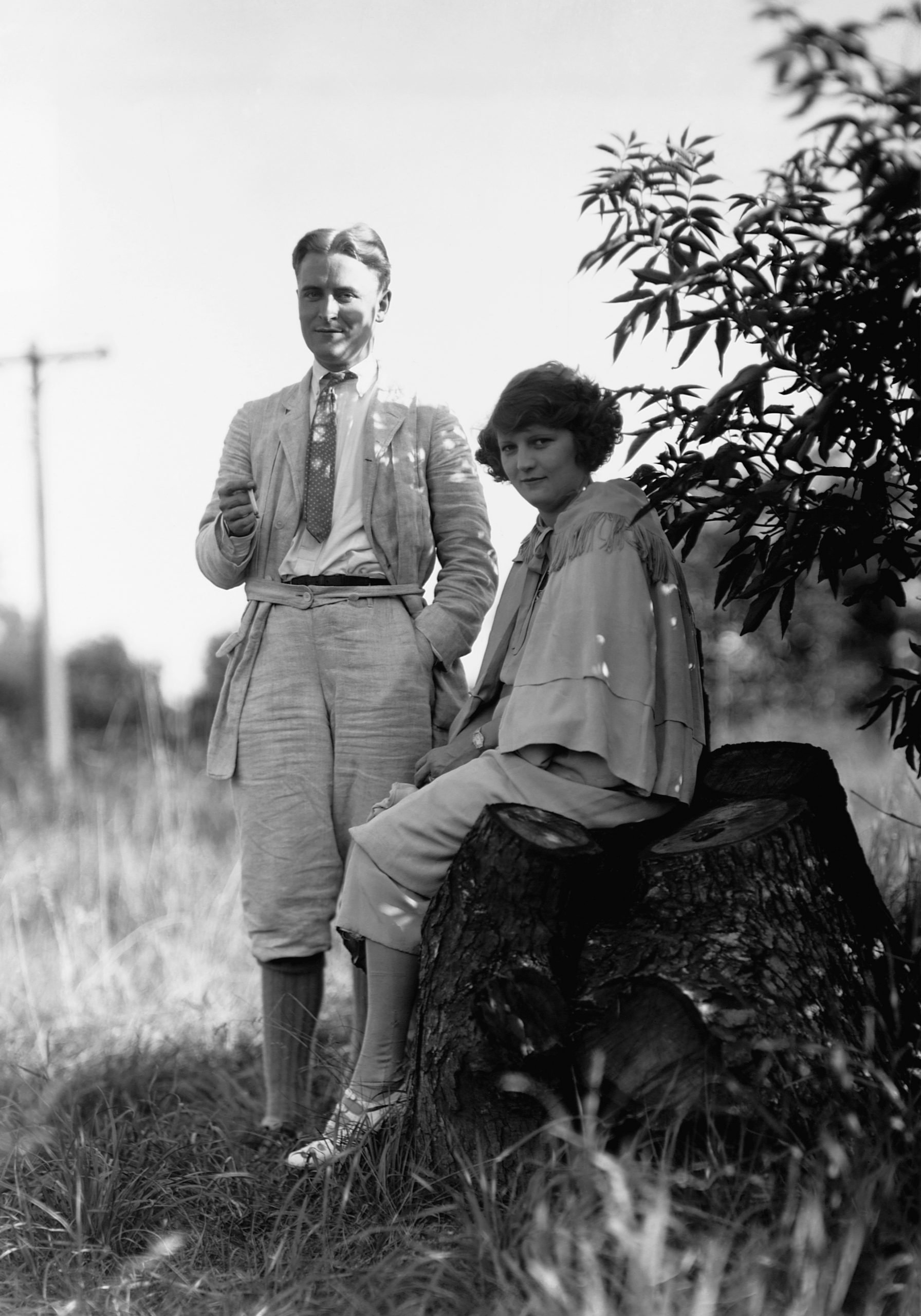
Scott and Zelda Fitzgerald
Scott Fitzgerald was one of the most celebrated American writers of the 20th century. Along with his wife Zelda, a talented writer in her own right (Scott frequently plagiarized her diary and letters for his novels), the Fitzgeralds were known as icons of the Jazz Age. In 1921, the couple became pregnant and returned to Scott's childhood home near St. Paul, Minnesota where Zelda gave birth to their daughter, Frances Scott Fitzgerald. This photo shows a young couple at the beginning of their careers; Scott's most famous novel, The Great Gatsby, was yet to be written.
7 / 51
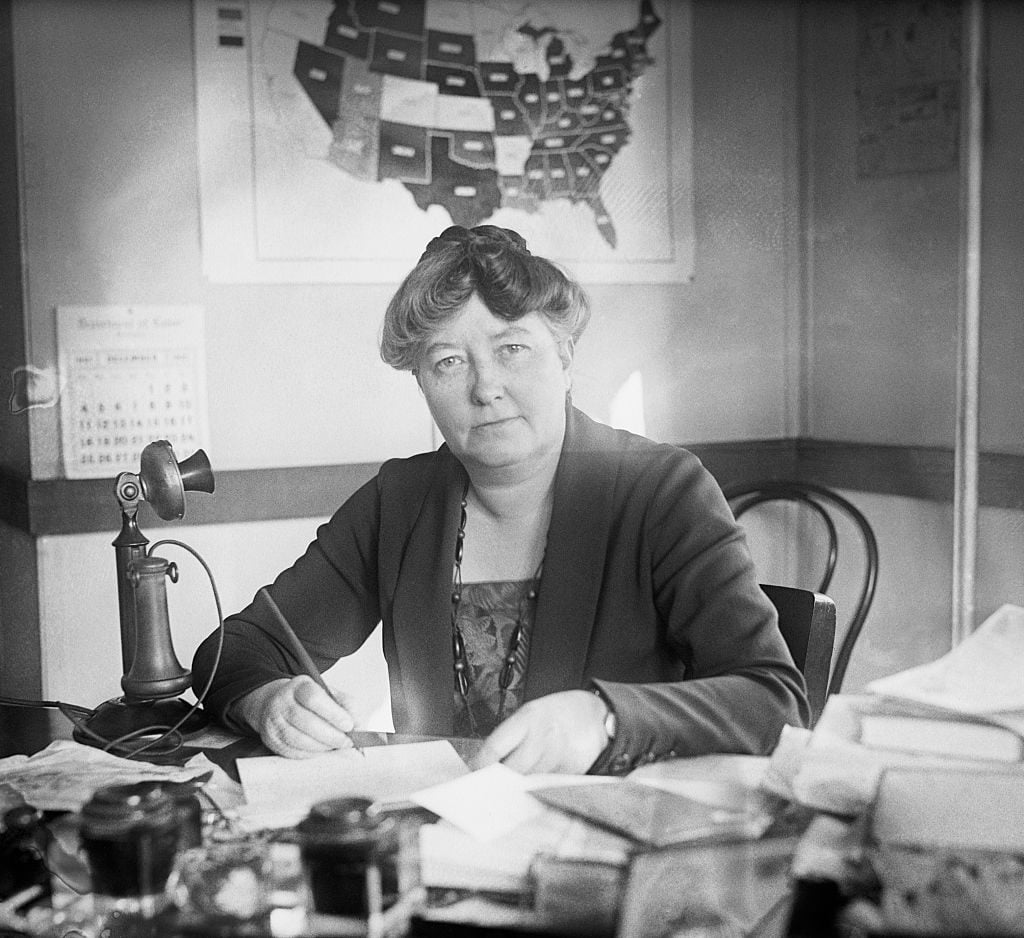
Mary Anderson, Women's Bureau of the Labor Department
At the time of this photo, Mary Anderson was one of only two women holding leadership positions in the federal government. As the Director of the Women's Bureau of the Labor Department for 25 years, she served under five presidents. A pioneer of intersectional feminism, Anderson believed that as long as exploitation of one group occurred, society would suffer. Throughout her life, Anderson advocated for equal pay and the expansion of rights for women, especially in the workplace.
8 / 51

Hudson Factory production line
The Hudson Motor Car Company made cars in Detroit, Michigan from 1909 to 1954 when it merged with another company to form the American Motors Corporation. Although the company had a signature engine, the Super Six (more powerful than the common four-cylinder engines), and became the third most successful American car manufacturers, their production never reached the heights of Ford or Chevrolet, peaking with 300,000 cars in 1929 (Ford sold 1.5 million that same year).
9 / 51
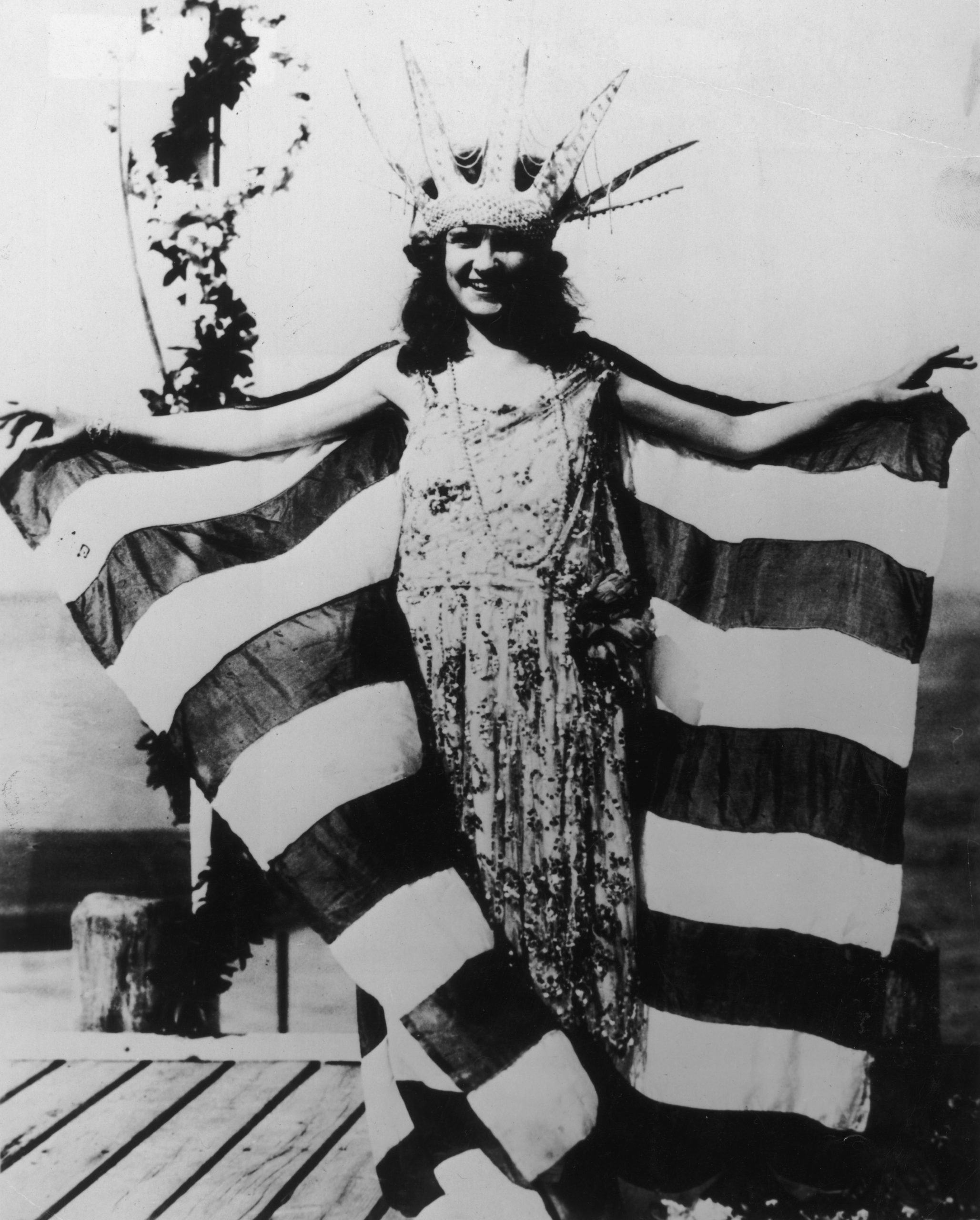
First Miss America
This classic pageant was started as an effort to extend the summer tourist season at New Jersey's Atlantic City. Washington, D.C. native Margaret Gorman won the first-ever Miss America "Golden Mermaid" crown (plus a cool $100) when she was just 16. When another teenager, 15-year-old Marian Bergeron won in 1933, the contestant age range was upped to 18-26. By 1944, the previous year's Miss America, Jean Bartel, suggested that the prize become a college scholarship.
RELATED: Can You Guess In Which Decade These Iconic Photos Were Taken?
10 / 51
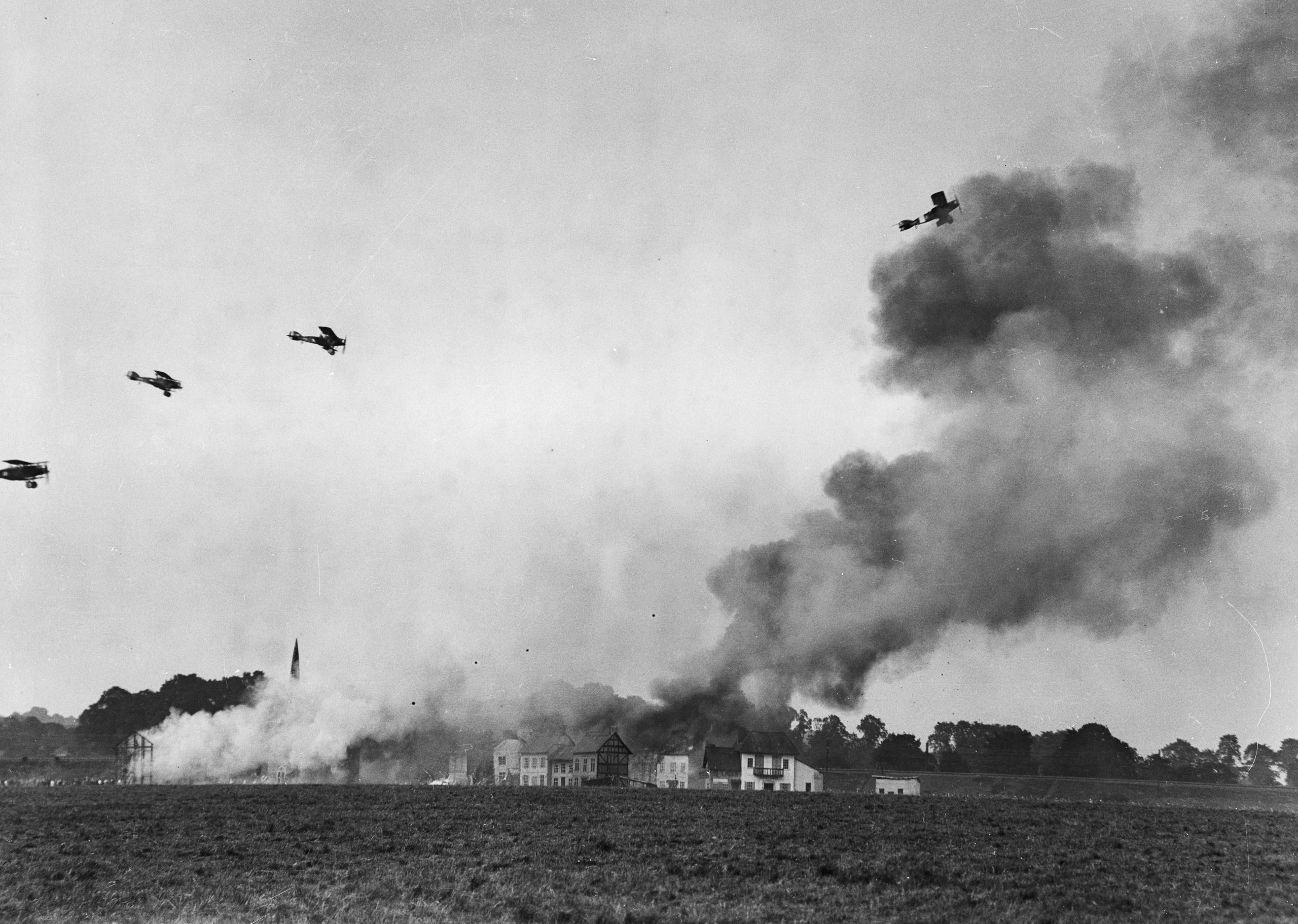
Mock bomb raid, U.K.
Every year, from 1920-1937, the Royal Air Force held a pageant at Hendon aerodrome, in the far northwest of London. The conflict of World War I had led to many advances in aviation and aerial warfare, and the display was meant to showcase the work and abilities of the RAF. In the scene pictured above, Bristol Fighter airplanes dropped smoke bombs and fireworks on the "village" which had been built for the occasion out of scrap metal. The crowd of over 80,000 cheered as the fake village, which had been set up as a German military headquarters in a clear call-back to the Great War, went up in flames.
11 / 51
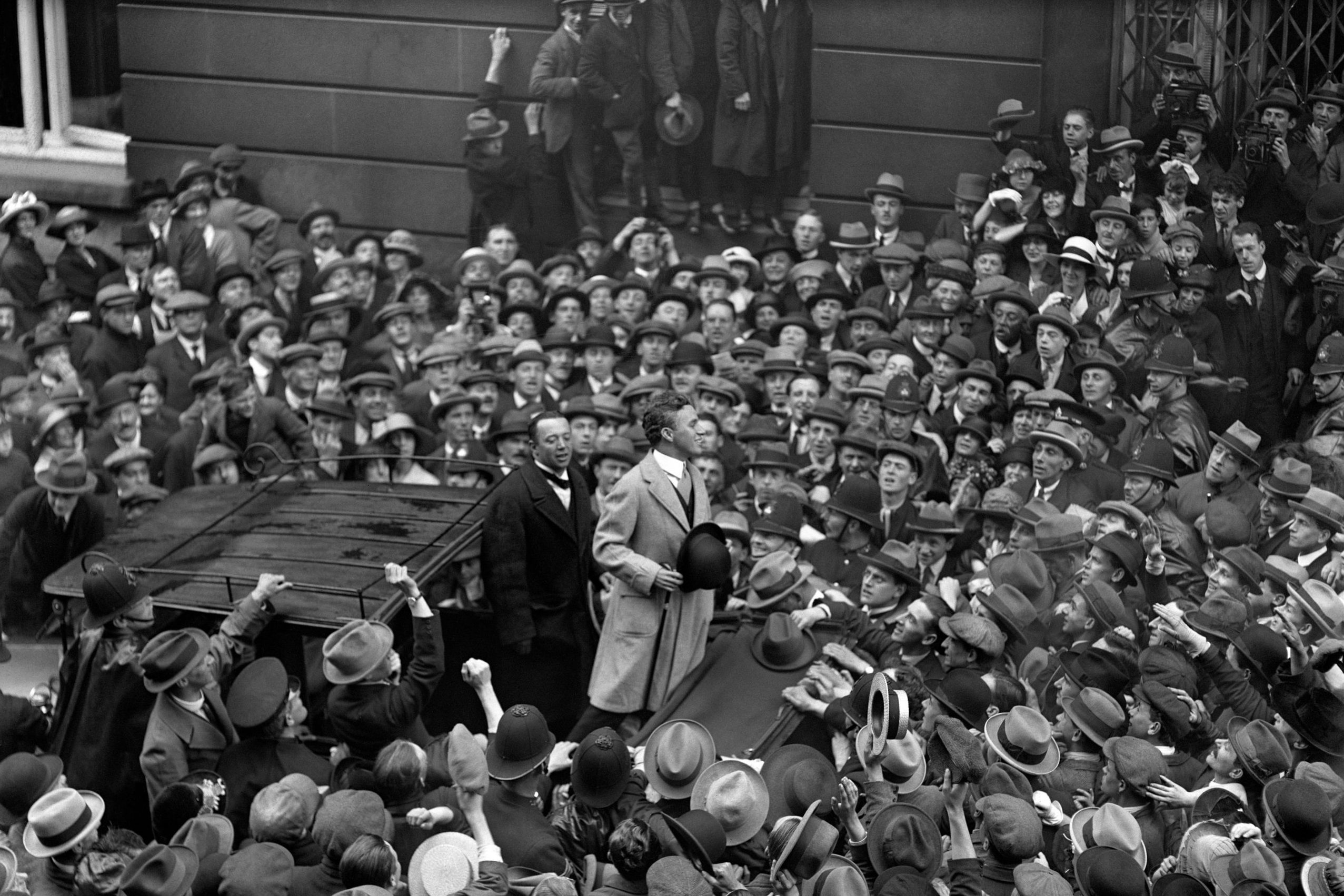
Charlie Chaplin
Charlie Chaplin grew up in extreme poverty in South London, before moving to America at 19 and becoming a famous and beloved actor and director, not least for his "Little Tramp" character. In 1921, he arrived back in England after a nine-year absence to publicize his new film, The Kid, and was overwhelmed to find himself greeted by thousands of adoring fans just a few miles away from the streets of his childhood. Chaplin eventually managed to get up to his room at the Ritz Hotel, where he leaned out of the window and threw carnations down to the crowd.
12 / 51
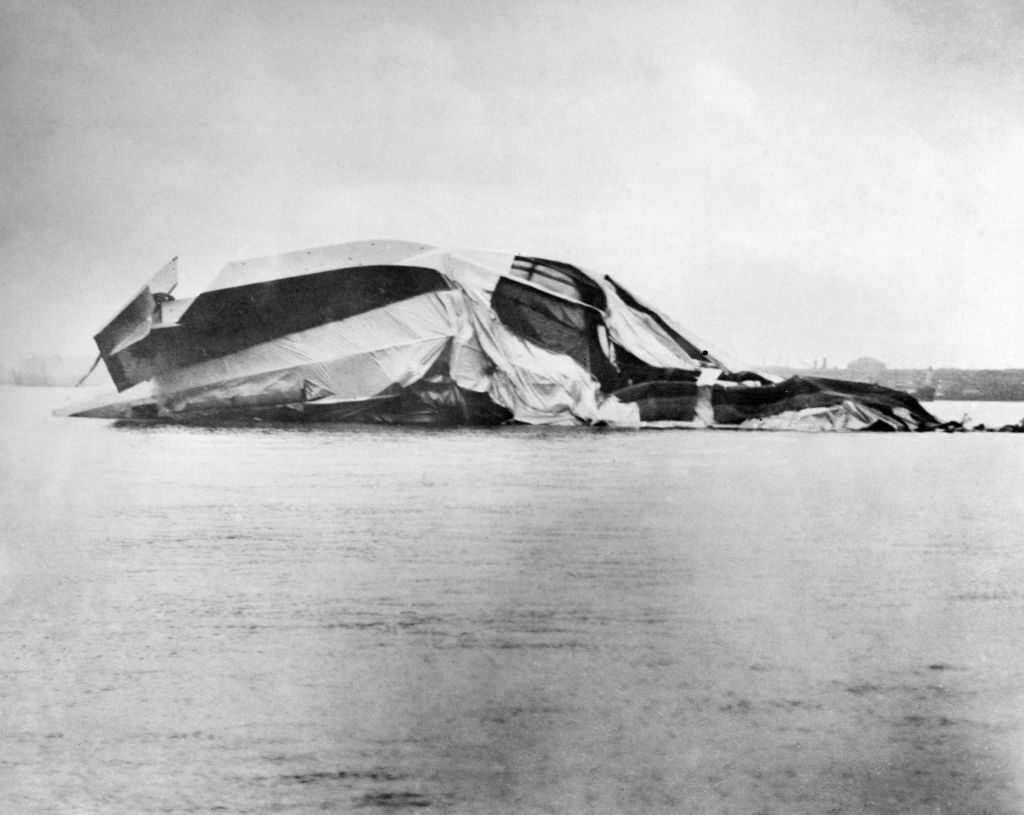
R38 airship crash
The history of airships is short and tragic, and the R38-class airship is no exception. Designed during the First World War for the British Royal Navy to carry out sea patrol duties, construction was abandoned after the armistice. The project was later sold to the United States Navy, which wanted to add airships to its fleet, and the R-38 was built for testing. At the time of its flight, it was the largest airship ever built. Sadly, on its fourth test flight, the R-38 suffered structural failure, exploding in mid-air and falling into the Humber Estuary in northeast England. Only one of the 17 Americans and four of the 32 Britons on board survived.
13 / 51
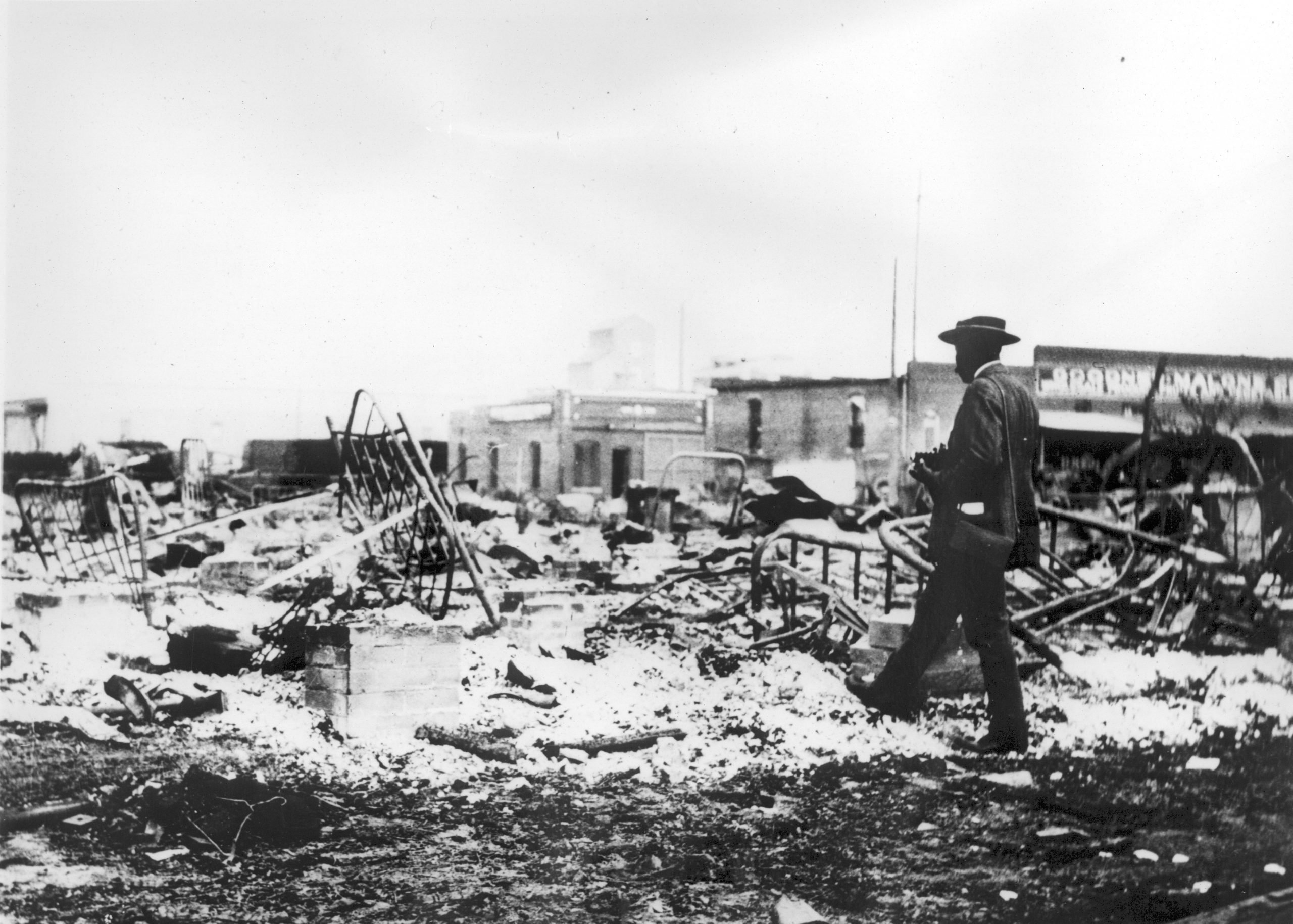
The Tulsa Race Massacre
This horrific event has been called the single worst incident of racial violence in American history. In 1921, Tulsa, Oklahoma, was the home of the wealthiest Black community in the United States, the Greenwood District. The district was the place where the majority of Tulsa's 10,000 Black residents lived and worked, and included a business district known as "Black Wall Street." On May 31, groups of armed White and Black men surrounded the courthouse where 19-year-old Black teenager Dick Rowland was imprisoned on charges of sexually assaulting a young White female elevator operator named Sarah Page (police later determined that he had merely accidentally stepped on her foot). The white men called for the sheriff to hand Rowland over to be lynched, while the Black men were there to protect him. Fortunately, the sheriff refused, and Rowland was later able to leave Tulsa without penalty or injury. However, with rumors flying, a White mob gathered, and over the next 18 hours, thousands of White men (some armed and deputized by city officials) destroyed the Greenwood District. They murdered between 100 and 300 Black people and looted and burned homes and businesses, including churches, schools, and hospitals, over an area of 35 city blocks. As this photo shows, only the iron bedsteads were left.
RELATED: Photos from the March on Washington
14 / 51
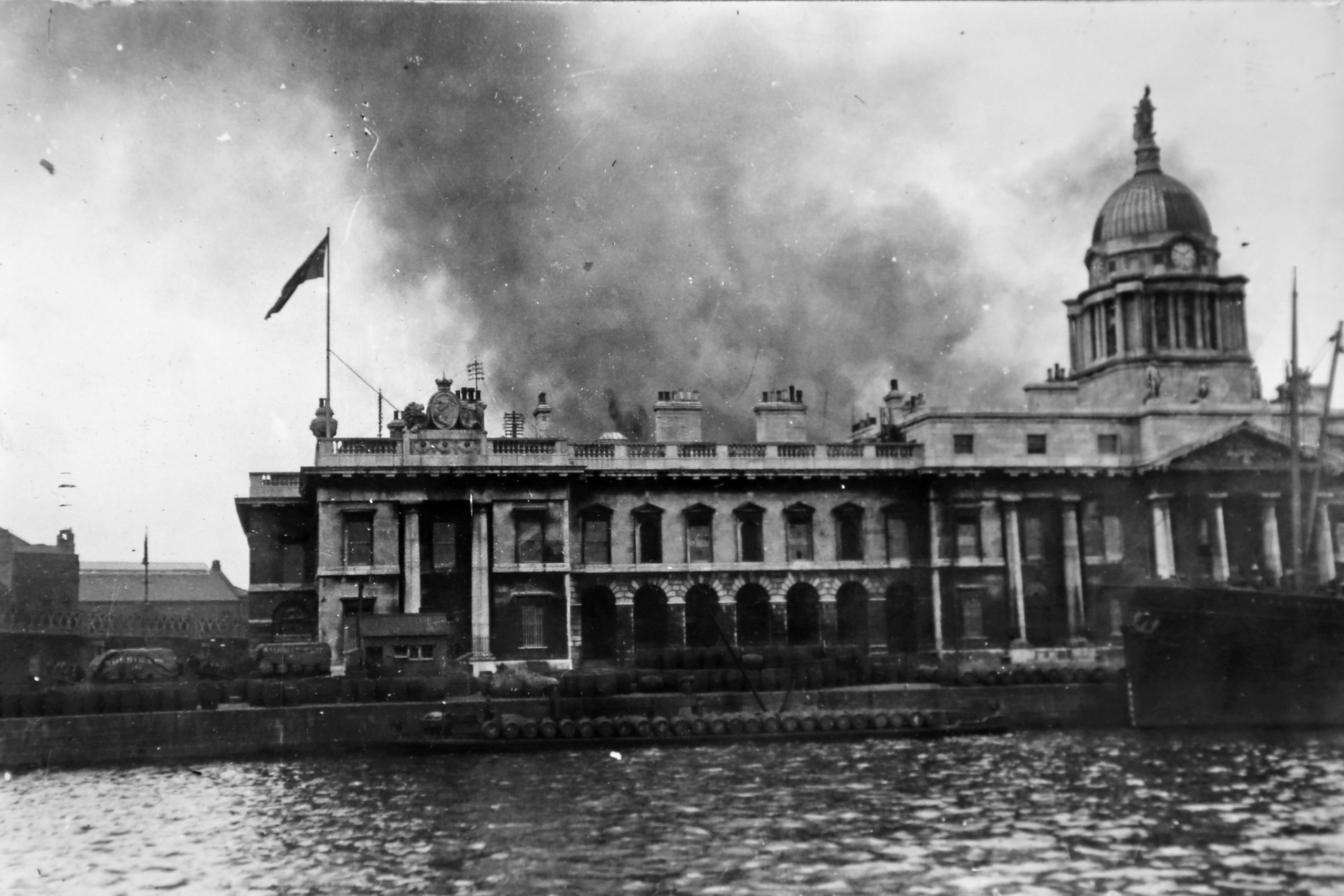
Burning of the Dublin Custom House
The Irish War of Independence (1919-1921) was a guerilla war between the Irish Republican Army advocating for Irish independence and the ruling British forces. The conflict came to a head in May 1921 when the IRA occupied and then burnt the Custom House, a government building in Dublin, nearly completely destroying it. Although the war led to the signing of the Anglo-Irish Treaty (making Ireland a dominion of the British Empire), conflicts continued until 1949 when Ireland was officially declared a republic.
15 / 51
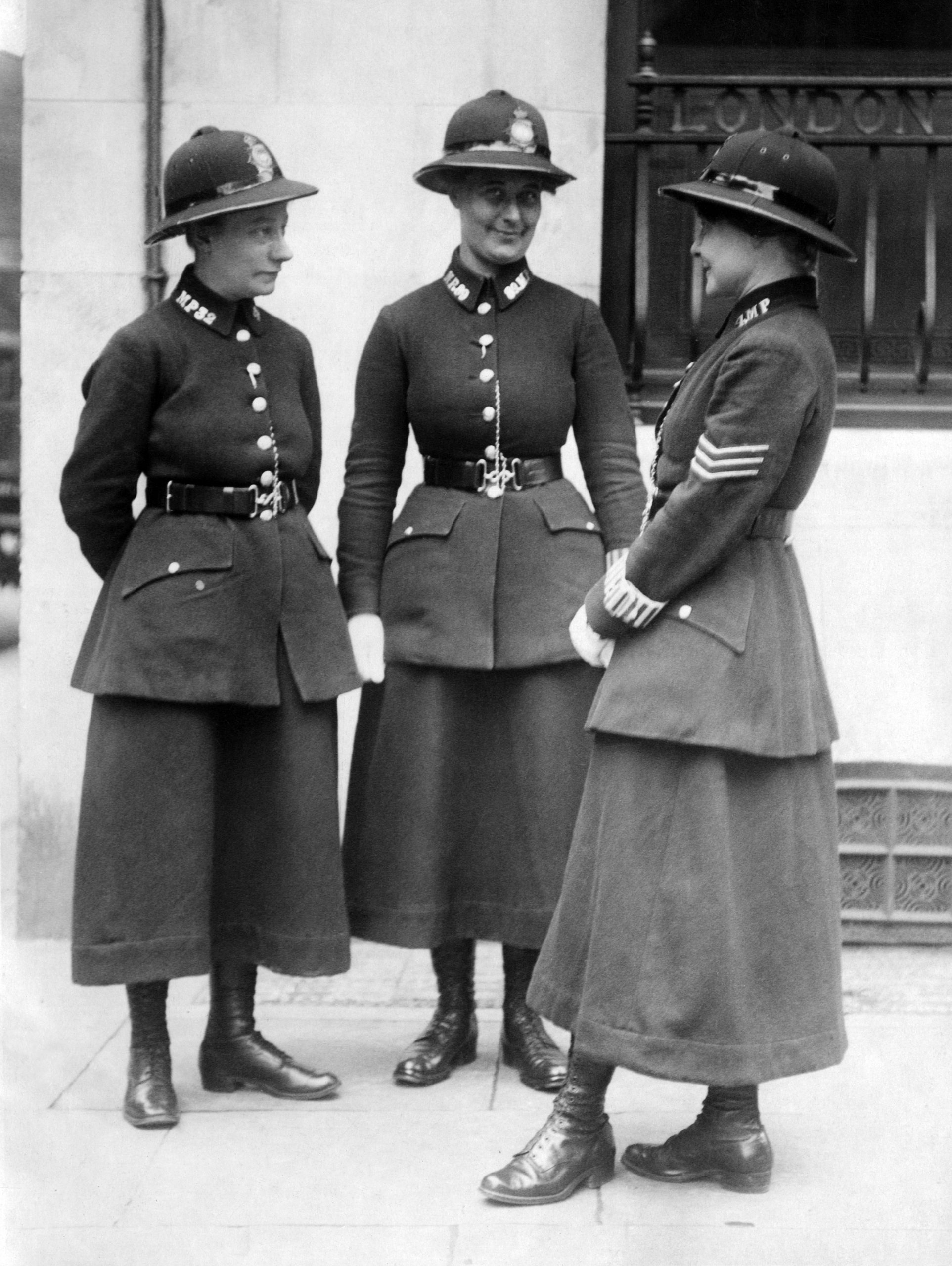
British women allowed to join police forces
As World War I deprived the country of young men able to serve in the police forces, women organizers made inroads into law enforcement. Although women in 1921 in Great Britain were allowed to be police officers, they were not granted power of arrest (the first policewoman to be granted power of arrest was Dorothy Peto in 1932). The role of female police officers was restricted to helping and issuing warnings to young girls and women in an effort to keep them off the streets.
16 / 51
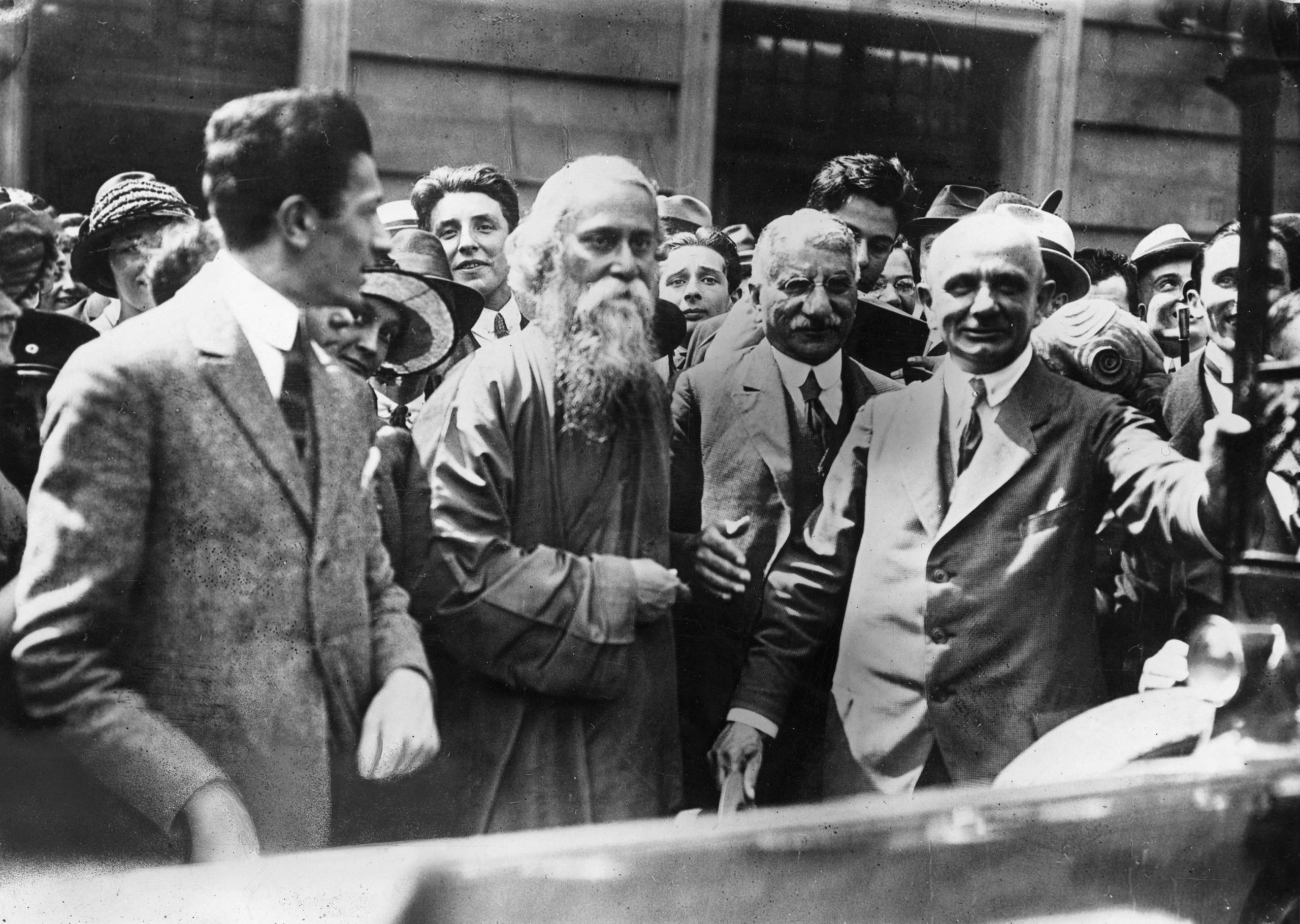
Rabindranath Tagore visits London
This historical photo shows Rabindranath Tagore, a philosopher and poet often referred to as the "Bard of Bengal." He opposed the British Raj and advocated for independence from Britain. In 1913 he became the first non-European to win the Nobel Prize in Literature, and in 1921 he visited Britain to discuss setting up a college in India with then-Secretary of State for India Edwin Montagu. That college, Visva-Bharati, was founded later the same year and became a university after independence in 1947.
17 / 51
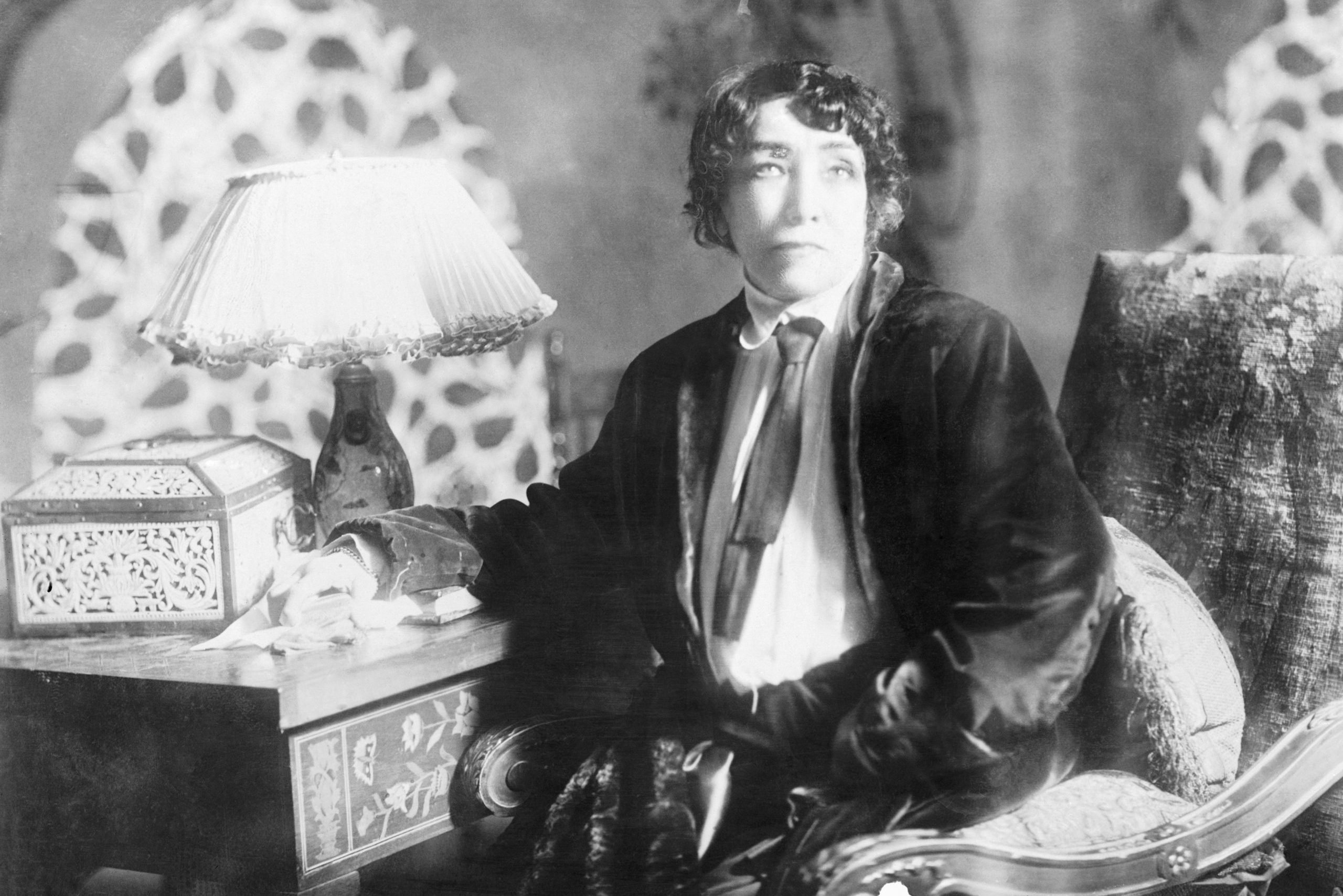
Sarah Bernhardt
This historical photo of the Jewish French actress Sarah Bernhardt was taken just two years before her death, at the age of 78. Born the illegitimate daughter of an upper-class courtesan, Bernhardt is known as one of the first true celebrities, and one of the first female ones. She created a cult of personality around herself, touring the world many times, posing for artists, and playing such famous roles as Ophelia and Joan of Arc. The many legends about her were only intensified by the truths, such as her many love affairs, bizarre menagerie of pets, huge financial gains and losses, and the occasional nap in her satin-lined coffin.
18 / 51
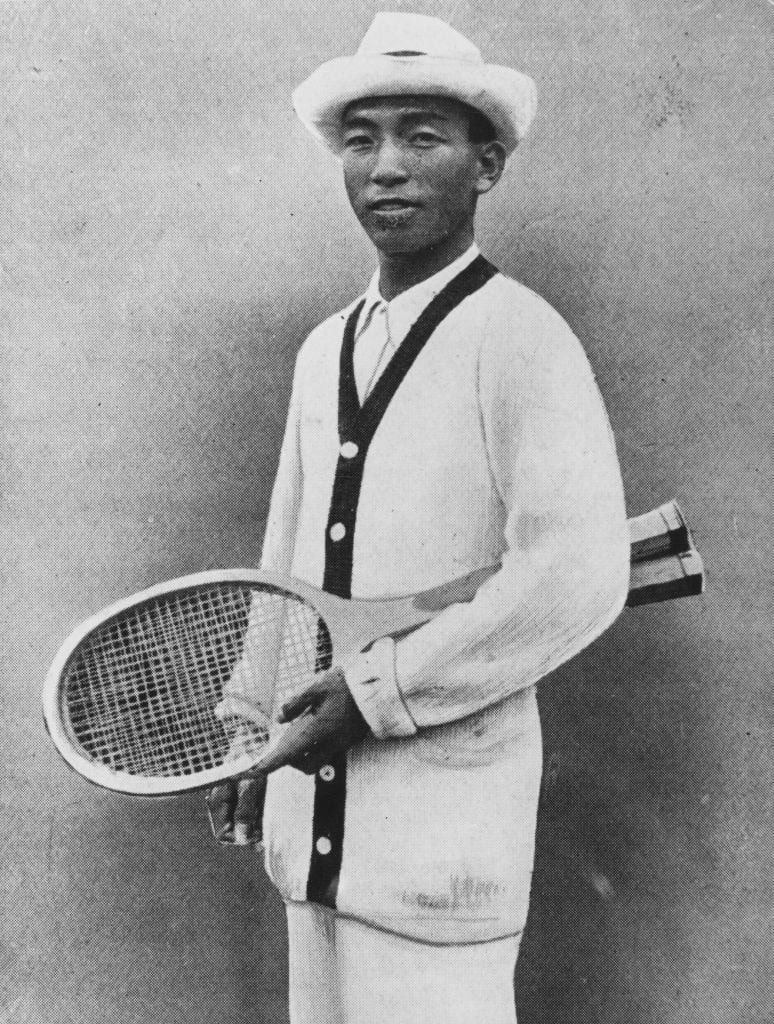
Zenzo Shimizu at Wimbledon
Zenzo Shimizu was one of the early pioneers of Western-style tennis in Japan. A corporate employee who pursued tennis in his spare time, he made it to Wimbledon in both 1920 and 1921, reaching the semifinals both times. In 1921 he also won the singles title at the prestigious Queen's Club Championships in London.
RELATED: Rare History Photos
19 / 51
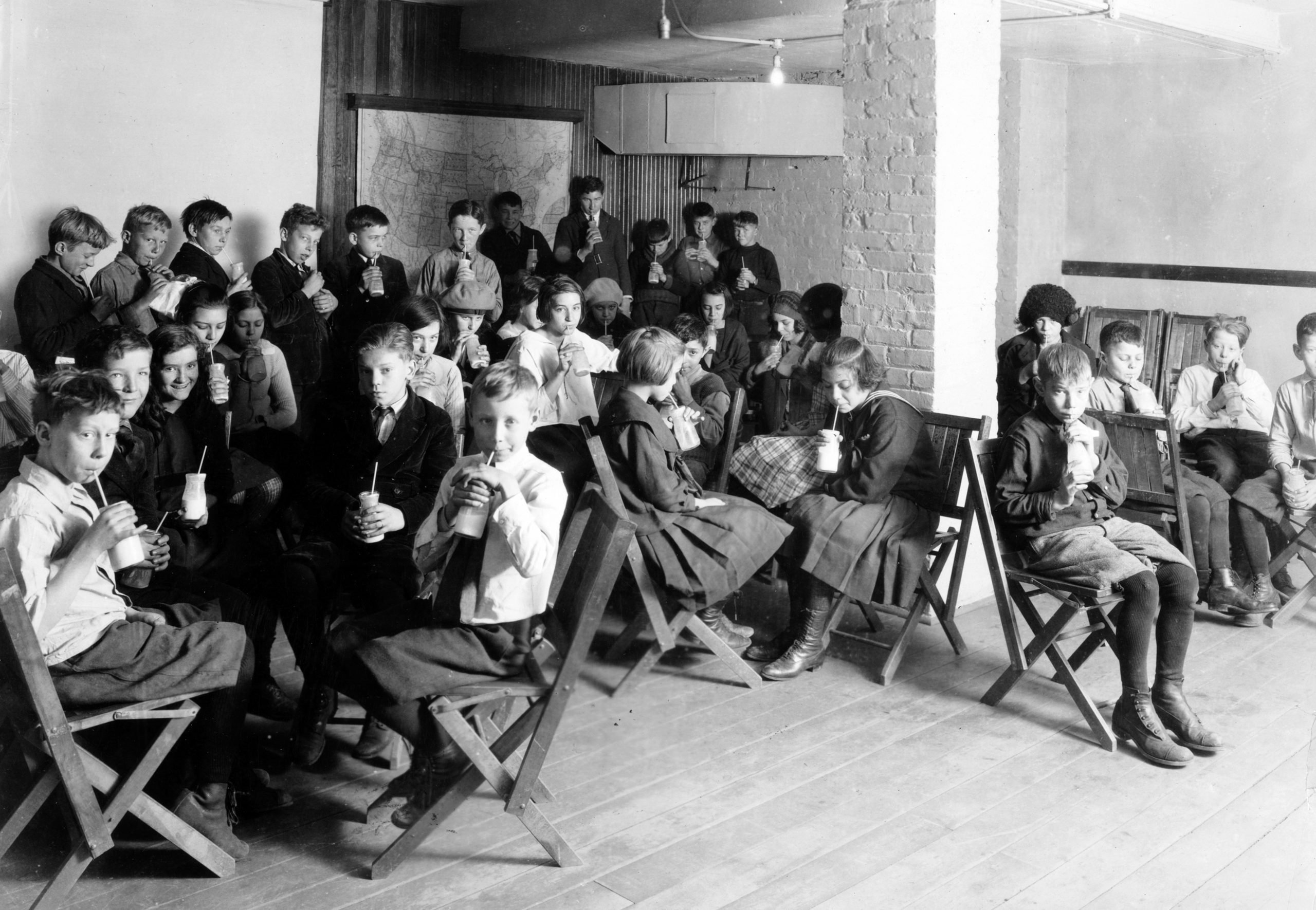
Got milk?
Although the School Milk Program (which mandated milk be served in schools to boost children's nutrition) was not authorized until around World War II, this historical photo from 1921 shows children in a Madison, Wisconsin school drinking milk. Wisconsin became the Dairy State in the late 19th century, as farmers switched from farming wheat to cows, so children in Wisconsin were served milk in school as part of the state industry's education program.
20 / 51
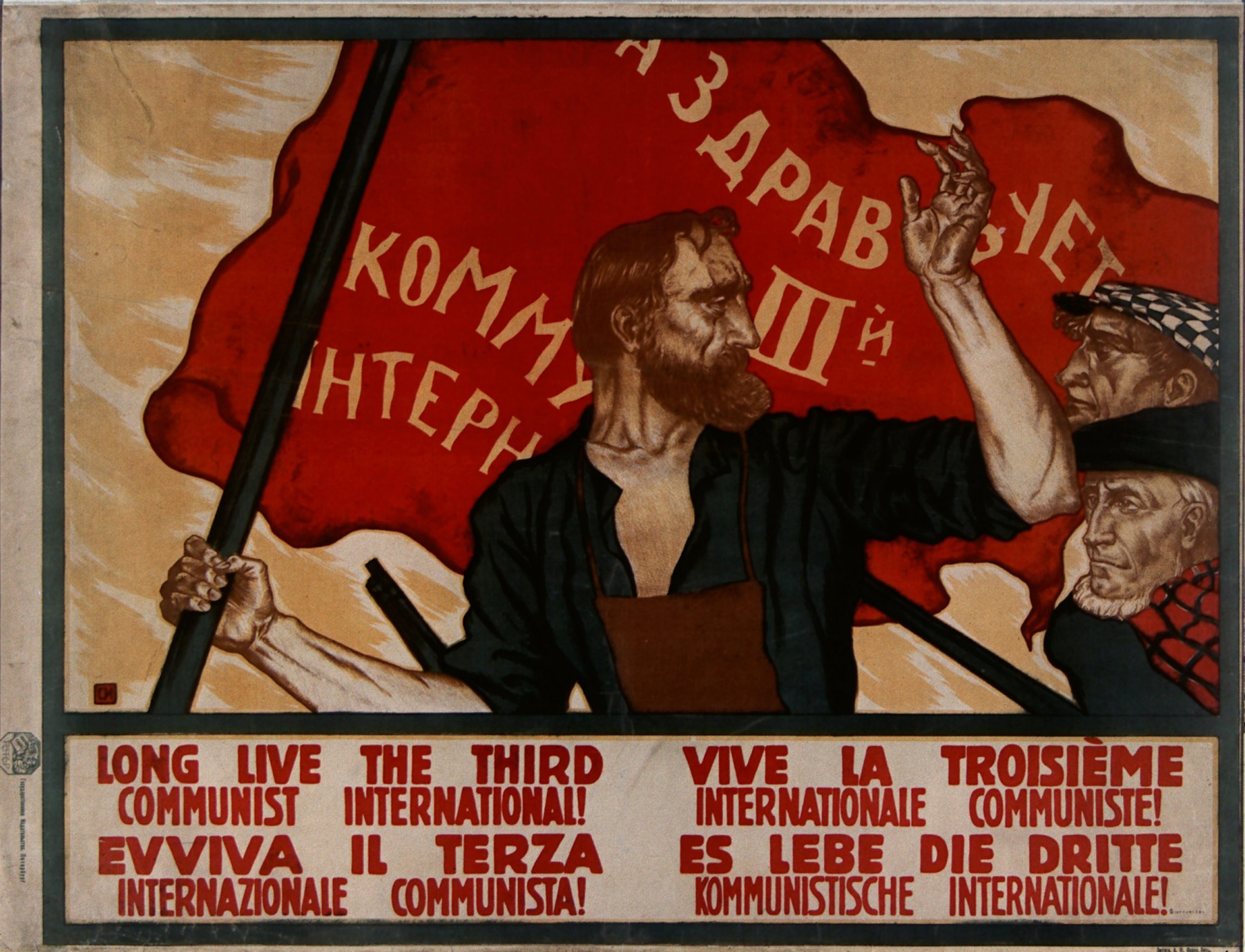
Long live the Third Communist International!
The Third International, also known as the Communist International, was an international organization founded by Vladimir Lenin in 1919. It advocated for world communism, with the goal of dissolving capitalism, overthrowing the international bourgeoisie, and eventually abolishing all states. The organization was shut down in 1943 by Joseph Stalin, to avoid alienating the U.S.S.R.'s allies (namely the United States and the United Kingdom) as they collectively fought against fascism in World War II.
21 / 51
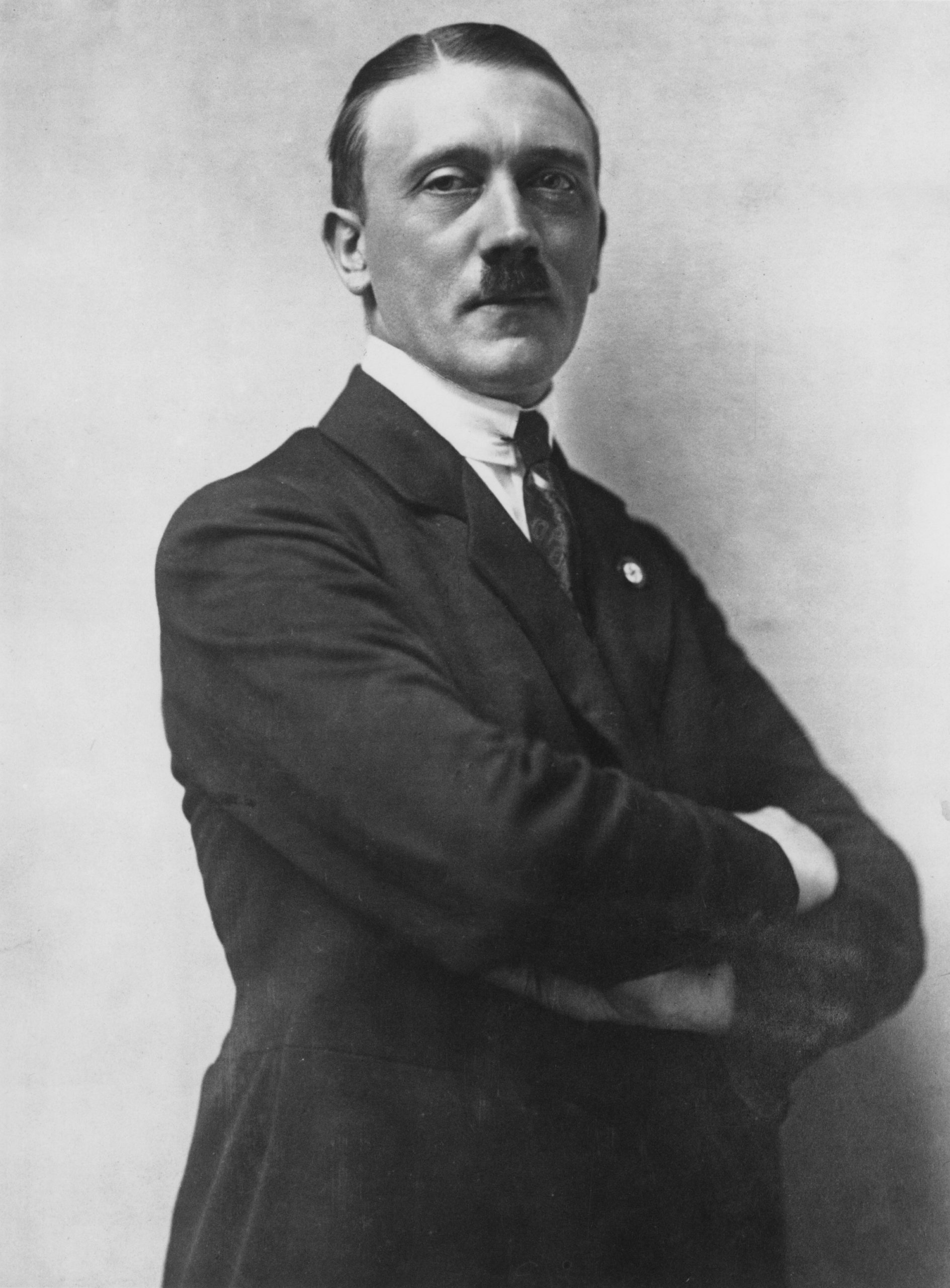
Adolf Hitler
On July 21st, 1921, Adolf Hitler became the leader of the National Socialist German Workers' Party, otherwise known as the Nazi Party. He had been a member since 1919 but soon rose to prominence with his speeches blaming Jews and Marxists for Germany's problems in the years post World War I. This was the beginning of his rise to power which eventually culminated in World War II and the genocide of more than 570,000 people, including around 6 million Jewish men, women, and children.
22 / 51
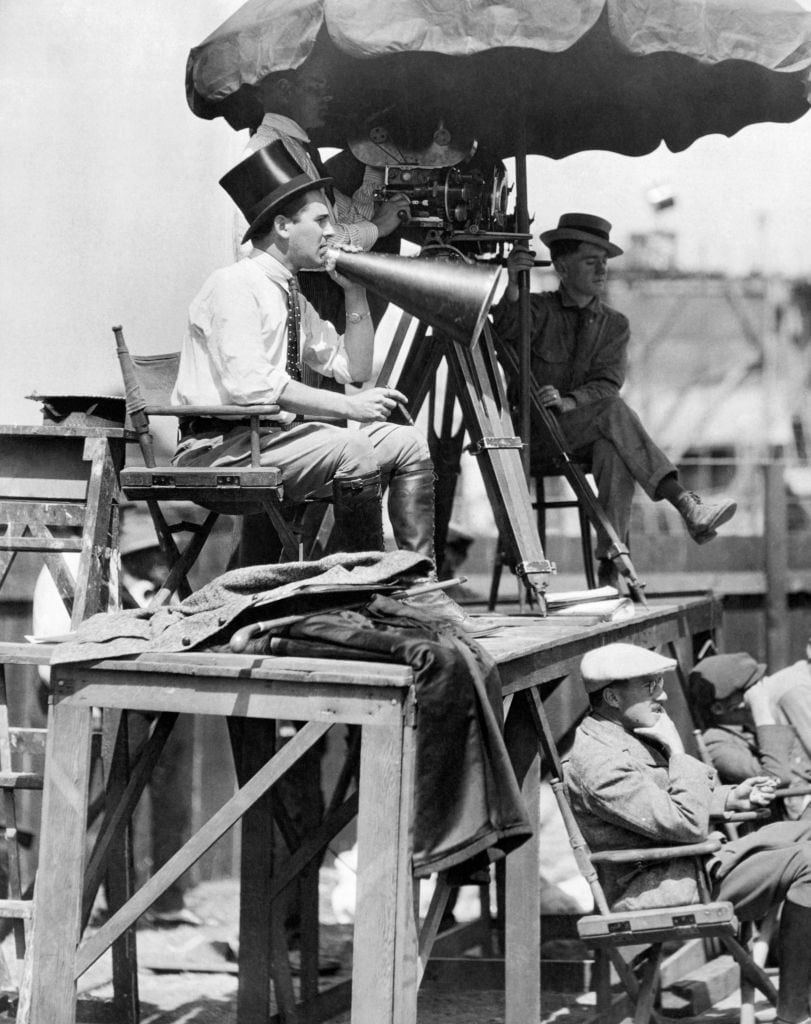
Making the top-grossing film of 1921
The 1921 movie The Four Horsemen of the Apocalypse was the highest-grossing film of the year, beating out Charlie Chaplin's The Kid. Rex Ingram (shown in this historical photo in full boots-and-top-hat Old Hollywood regalia) directed the silent war epic, while pioneering woman in film June Mathis wrote the script, becoming one of the most powerful women in Hollywood in the process (and the first female executive at MGM). She also discovered actor Rudolph Valentino, who became a huge star with the release of the movie. The Four Horsemen has become a film classic, and is known as one of the first true anti-war films.
RELATED: Famous Photos in Color
23 / 51
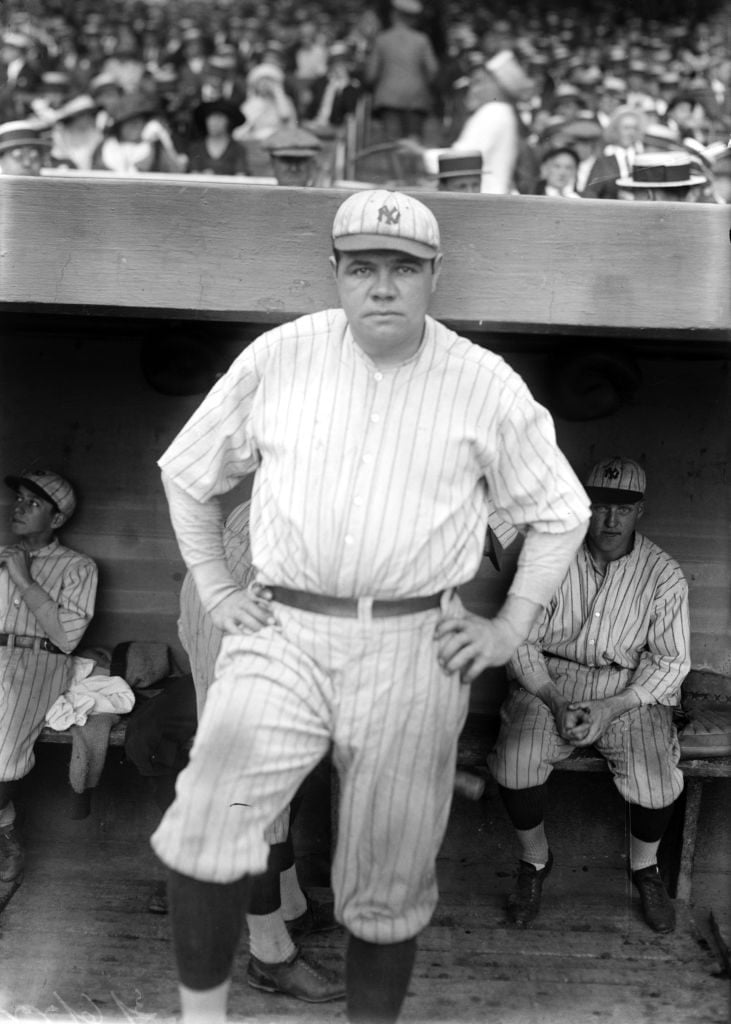
Babe Ruth
Babe Ruth had only stopped pitching two years before this historical photo was taken. At only 26 years old, he led the Yankees to their first-ever World Series title in the 1921 season. Ruth also set a new single-season home run record in that year, hitting 59 in total with a .378 batting average. Ruth went on to win three more World Series with the Yankees.
24 / 51

Composition with red, black, yellow and blue, Piet Mondrian
In 1917, Dutch artists Piet Mondrian and Theo van Doesburg founded an art movement called "De Stijl," translating to "style." The principles of the movement were geometry (lines, squares and rectangles) and primary colors. The stark style was a reaction to the "Modern Baroque" architectural movement of the Amsterdam School, in which buildings had an organic, rounded appearance.
25 / 51
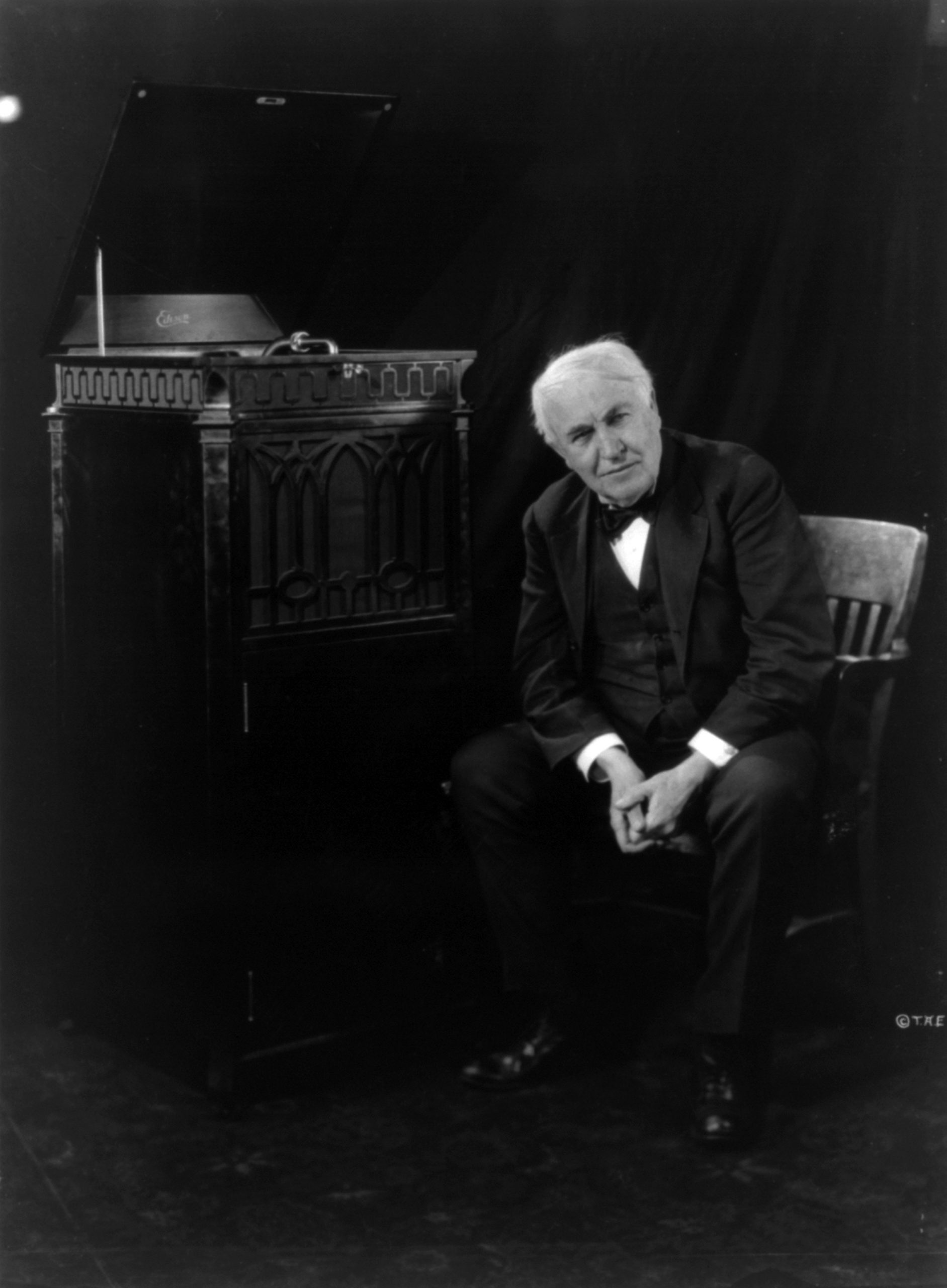
Thomas Edison with his phonograph
In the winter of 1921, 73-year-old Thomas Edison was living in his winter home in Fort Myers, Florida. The phonograph was invented by Edison in 1877, and improved by other inventers over the years including Alexander Graham Bell and Emile Berliner. The invention revolutionized the music industry. By the time of his death in 1931, Edison held over 1,000 U.S. patents in his name for his various inventions.
26 / 51
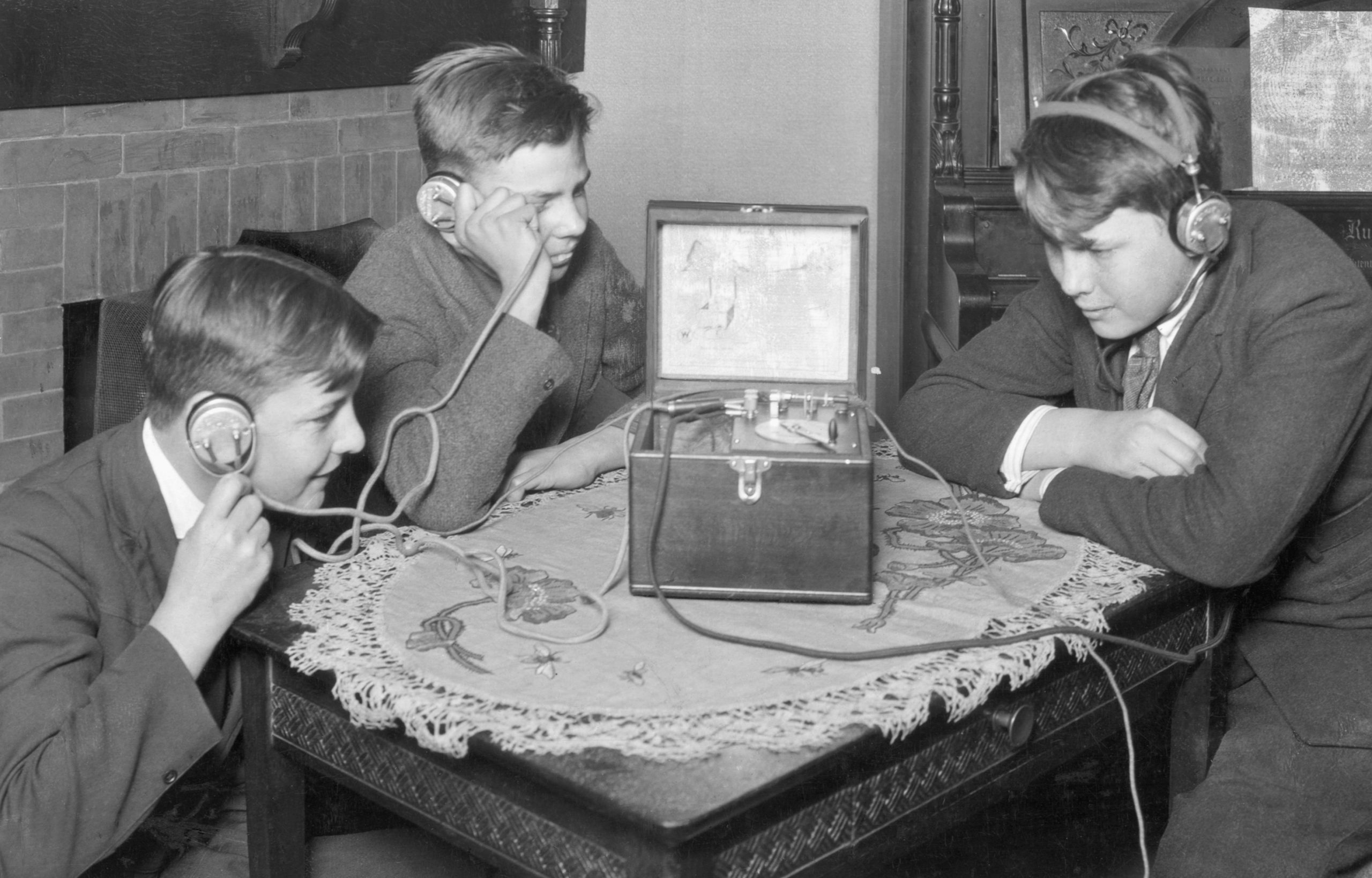
Early radio
Radio broadcasting became popular in the early 1920s, after advances in technology made during the First World War. Weekly musical broadcasts started in 1919, and by 1922 there were over 500 stations nationwide with daily broadcasts. Young people were encouraged to build their own crystal radio receivers, complete with headphones, to listen to the new craze.
RELATED: The Most Iconic Photos in American History
27 / 51
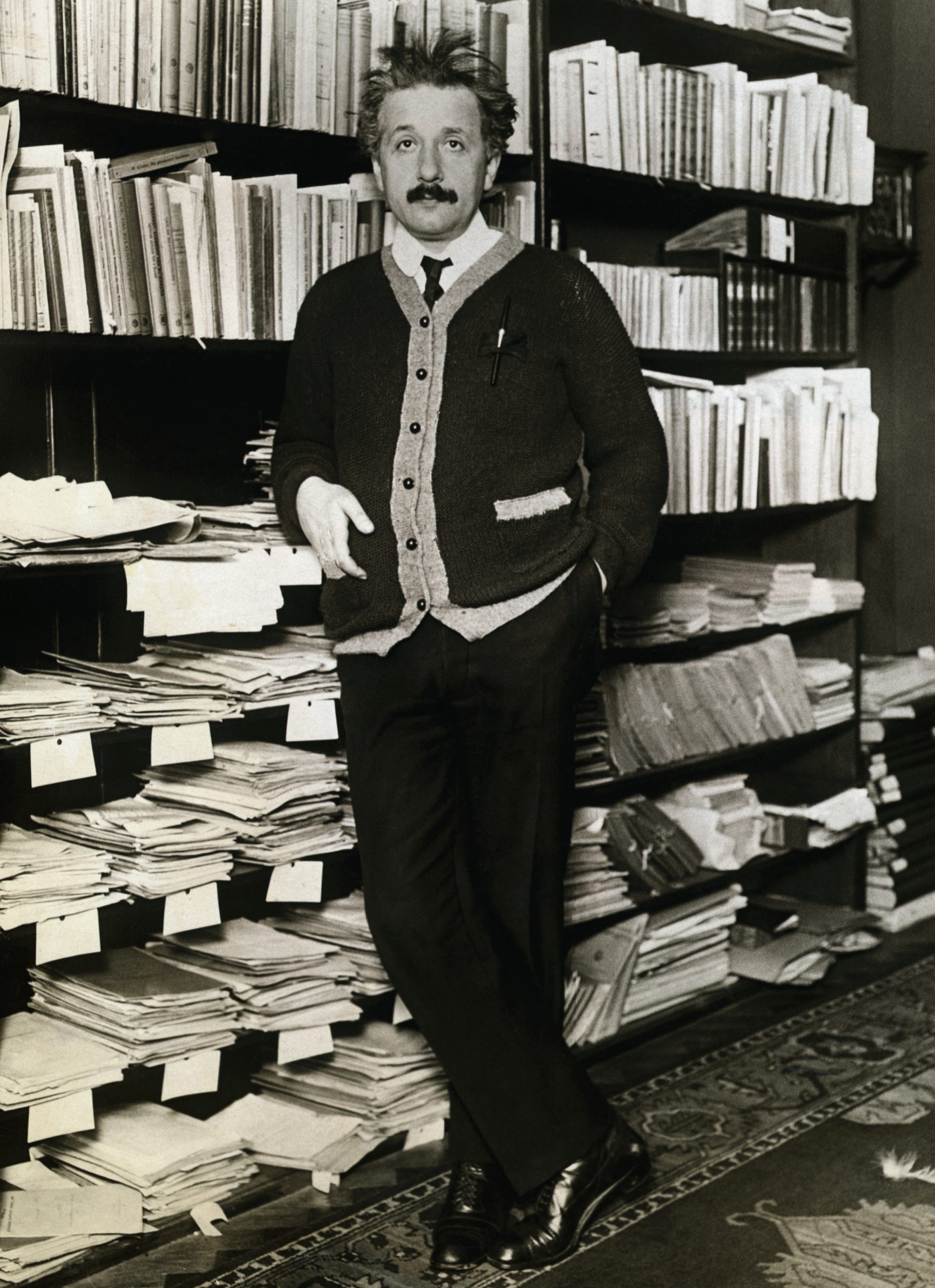
Albert Einstein at home in Berlin
In 1921, Albert Einstein visited the United States for the first time, delivering lectures at Columbia and Princeton and visiting the White House. On his return to Germany (as shown in this historical photo), he published an essay titled "My First Impression of the U.S.A.," describing Americans as "friendly, self-confident, optimistic, and without envy." How flattering! Einstein received the Nobel Prize for Physics in December of that year.
28 / 51
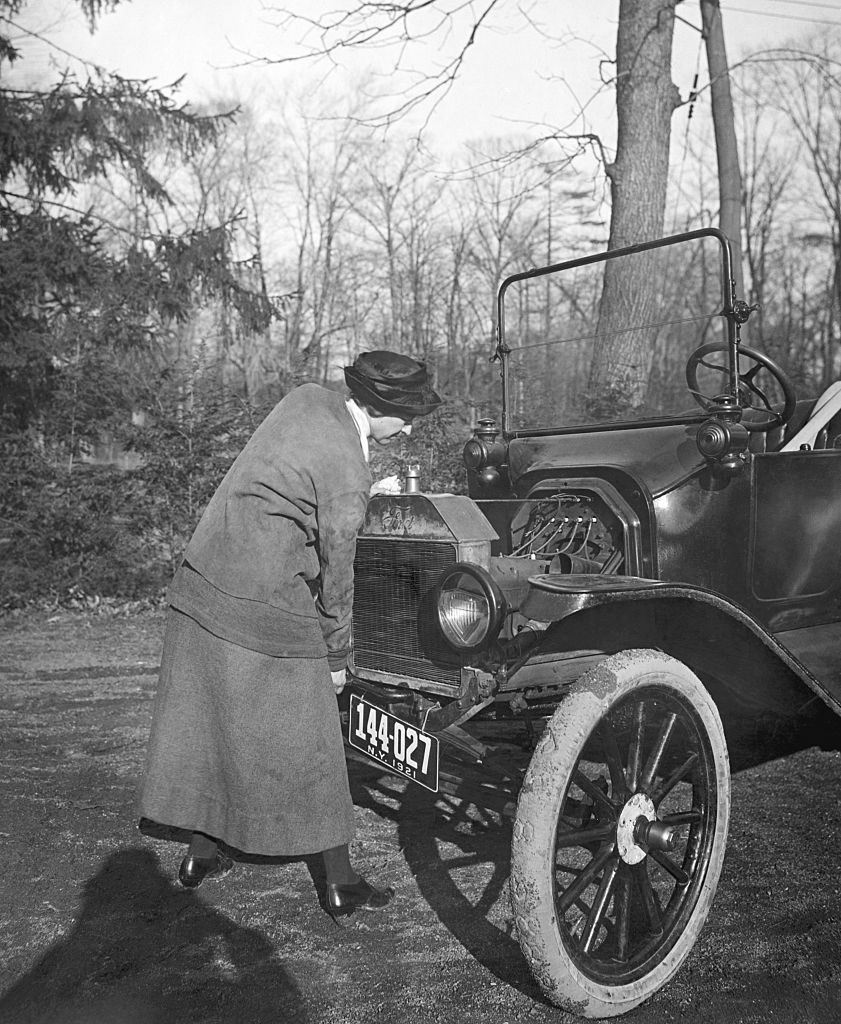
Cranking the car
Despite many men mistakenly believing that women lacked the necessary strength to start a gas-engine vehicle by hand cranking, early female motorists were not only able to do so, but they were also happy to. In 1915 Anita King was the first woman to complete a solo cross-country drive, and many other women were happy to engage in a little cranking to taste the freedom that came with owning a car.
29 / 51

EJ Hooper's basketball team
Oliver High School, in Winchester, Kentucky, was a segregated school for Black children, in operation from 1892-1956. Coach and teacher Ernest J. Hooper started the program for champion sports teams at the school. Both the football and basketball teams went on to become Blue Grass League Champions in 1923.
30 / 51
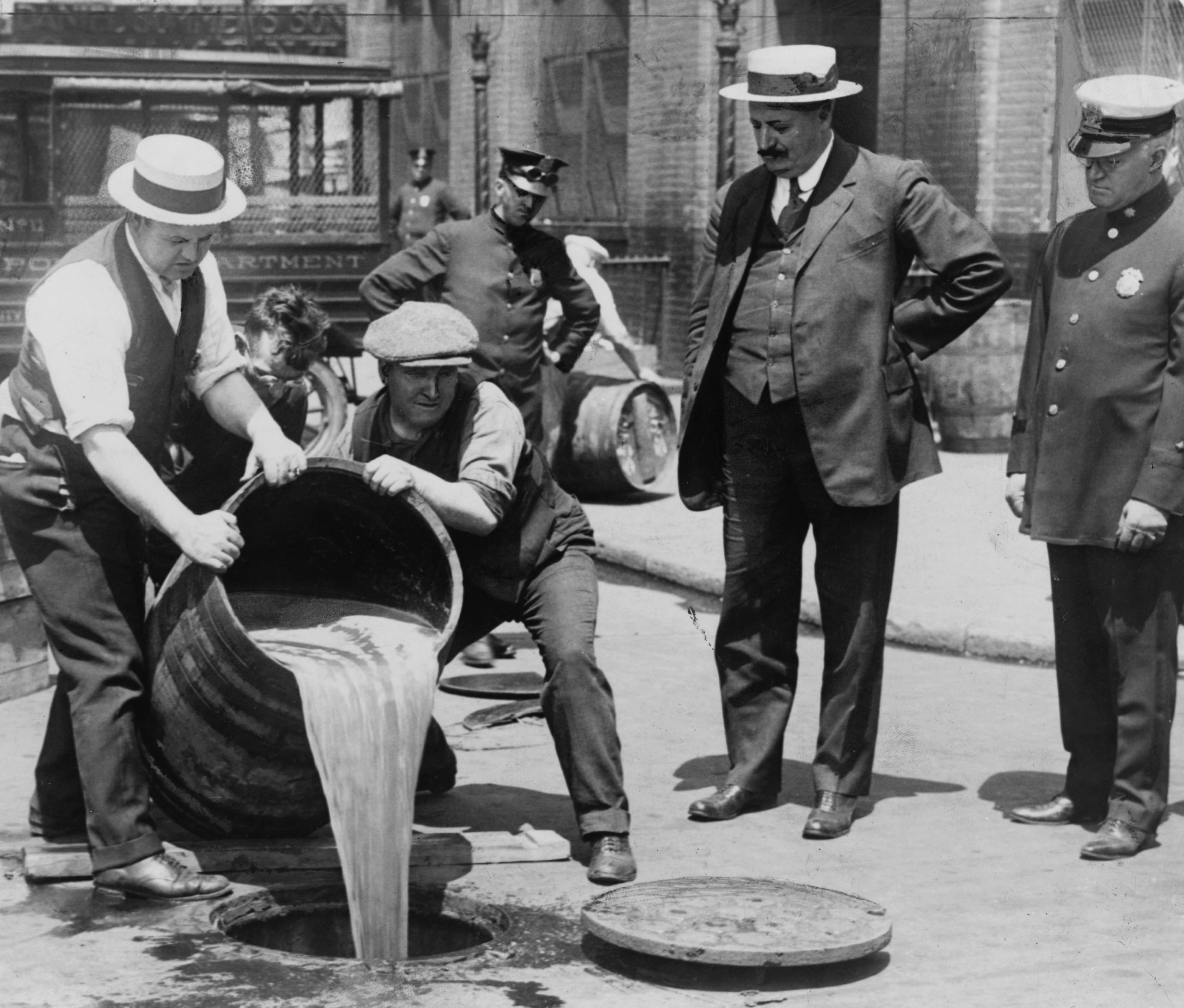
Pouring illegal alcohol into the New York sewer
Prohibition in the United States lasted from 1920 to 1933. The ban led to a huge increase in liquor crime, as criminal gangs ran illegal operations making and supplying beer and liquor. This historical photo shows New York City Deputy Police Commissioner John A. Leach (in uniform) supervising the disposal of alcohol seized during a 1921 raid.
31 / 51
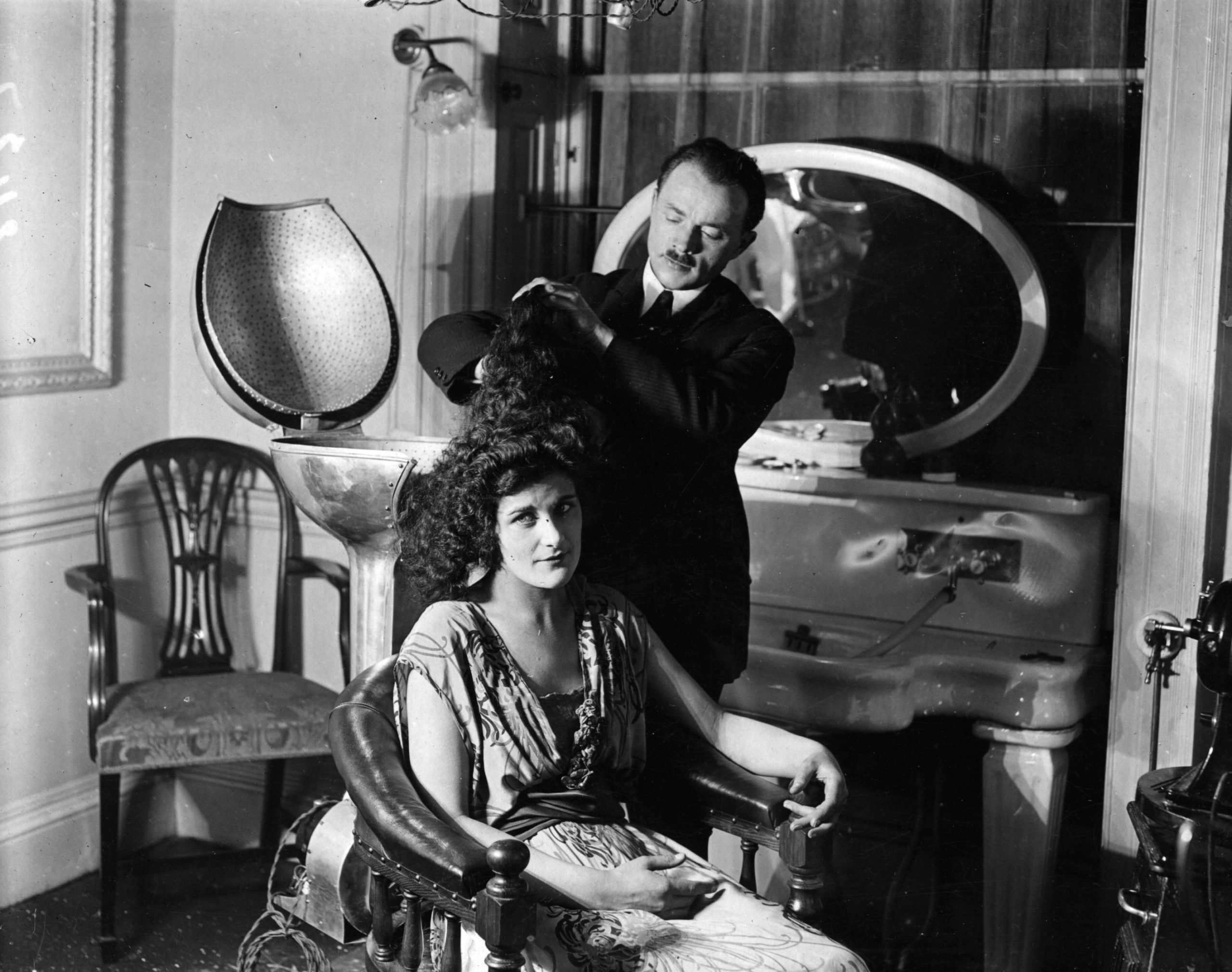
Permanent wave
As the use of electricity boomed, it began to be used for heating as well as lighting, and new forms of curling the hair using electricity and heat were born. From hand-held tongs to Nessler's electric permanent wave machine, salons and stylists offered their own curling techniques. The short hair popular in the 1920s made waving even more important.
32 / 51

Suffragette Sylvia Pankhurst
British Suffragette Sylvia Pankhurst was arrested 15 times during her time campaigning for women's rights. In this historical photo, she is being toasted at a breakfast celebrating her most recent release from prison. Throughout her life, Pankhurst supported the causes of anti-fascism and anti-colonialism, fighting for equal rights for all, and contributed mightily to the cause of women's rights.
33 / 51
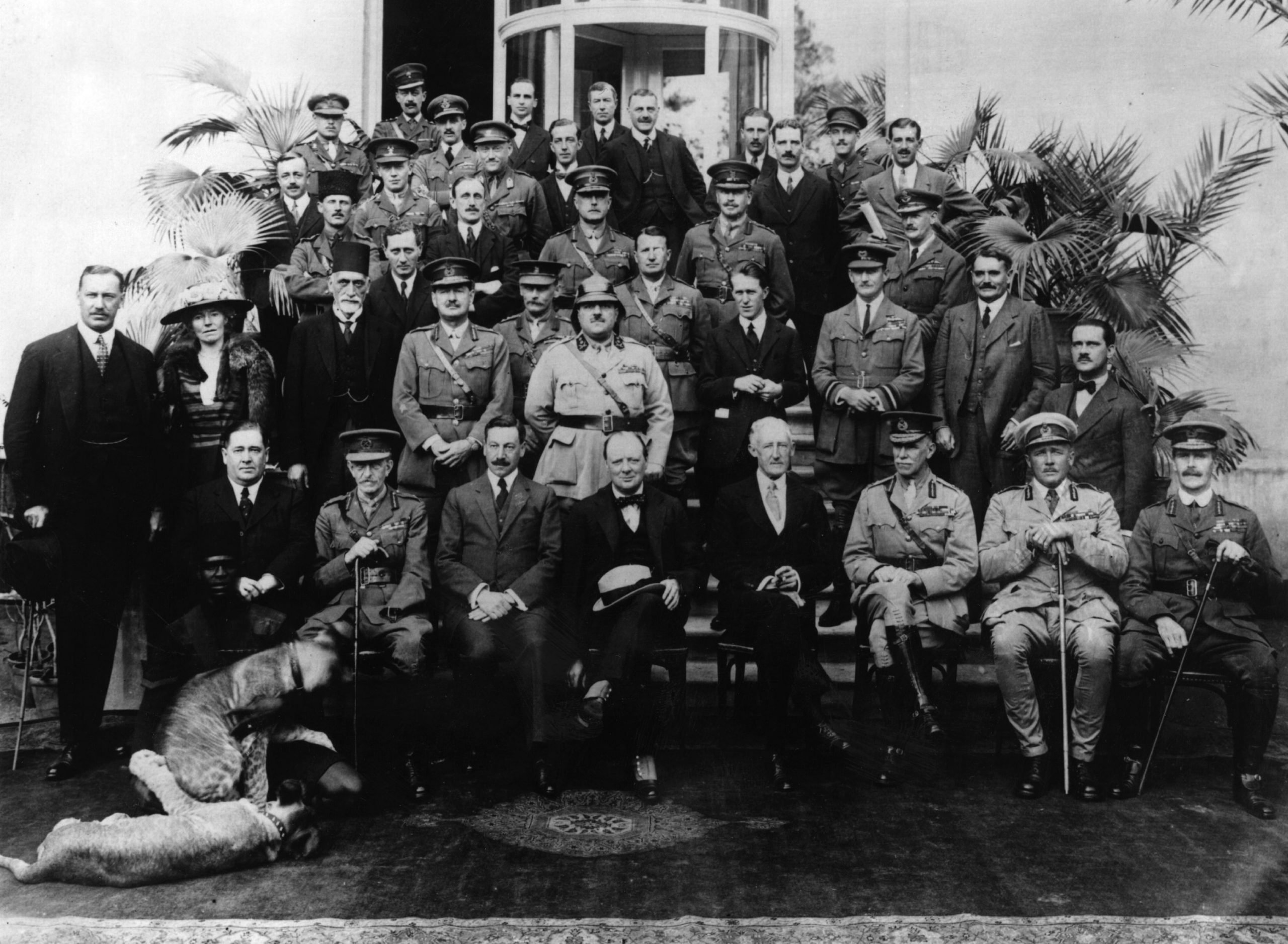
Cairo Conference, 1921
The region of Mesopotamia was occupied by the British during World War I. In 1920 a popular uprising broke out, and the Mesopotamia Commission met in Cairo to discuss the future of the region. Notable members of the British Commission in this picture include Gertrude Bell, T.E. Lawrence (otherwise known as "Lawrence of Arabia"), and Winston Churchill, as well as two lion cubs wrestling at the bottom left!
34 / 51
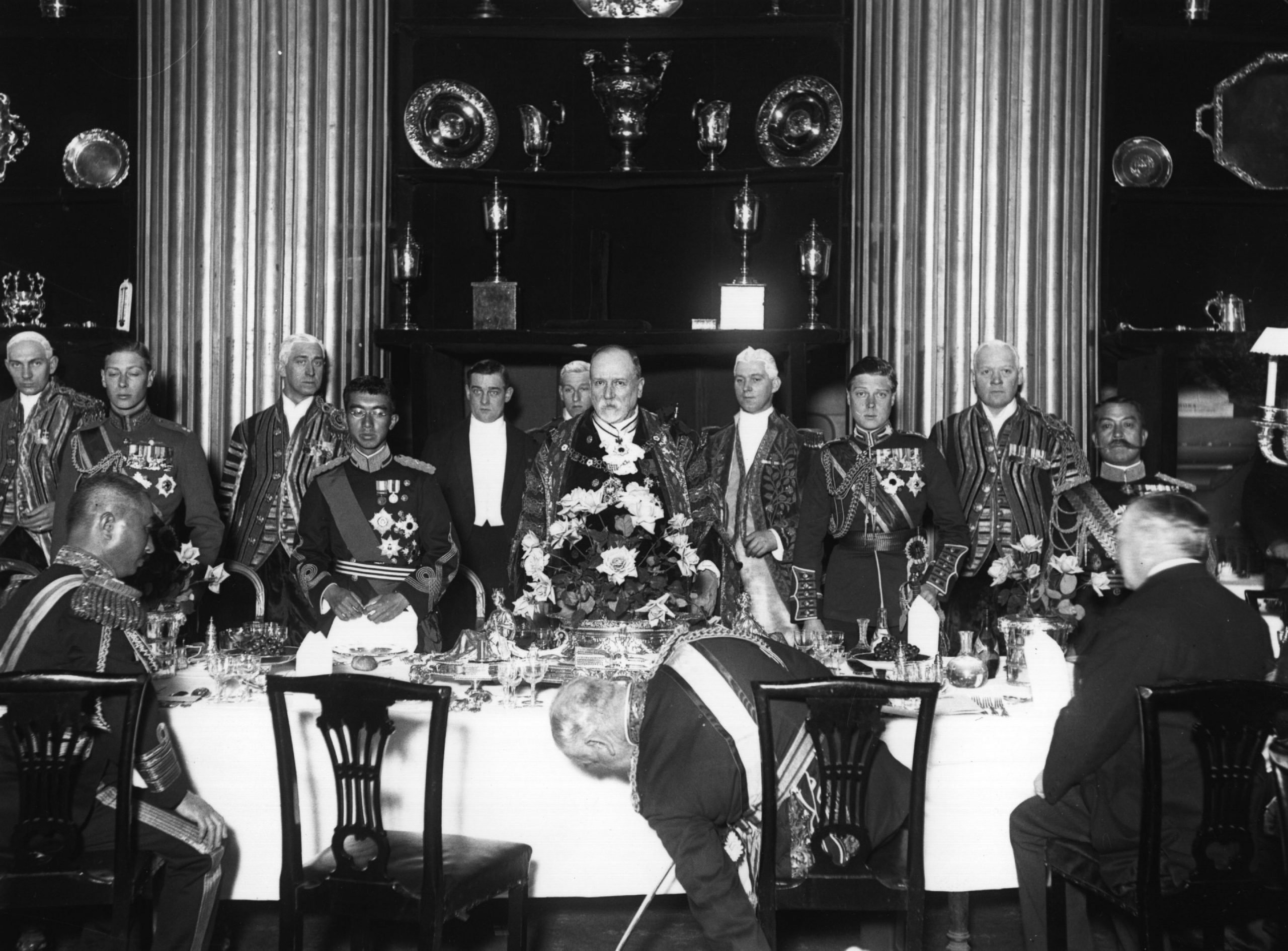
Prince Hirohito visits London
Prince Hirohito's European tour of 1921 marked the first time a crown prince of Japan had visited abroad. He apparently appreciated the relative casualness of British court life, compared to the rigid formality of the Emperor's court. He played golf with Prince Edward and visited with King George V over breakfast.
35 / 51
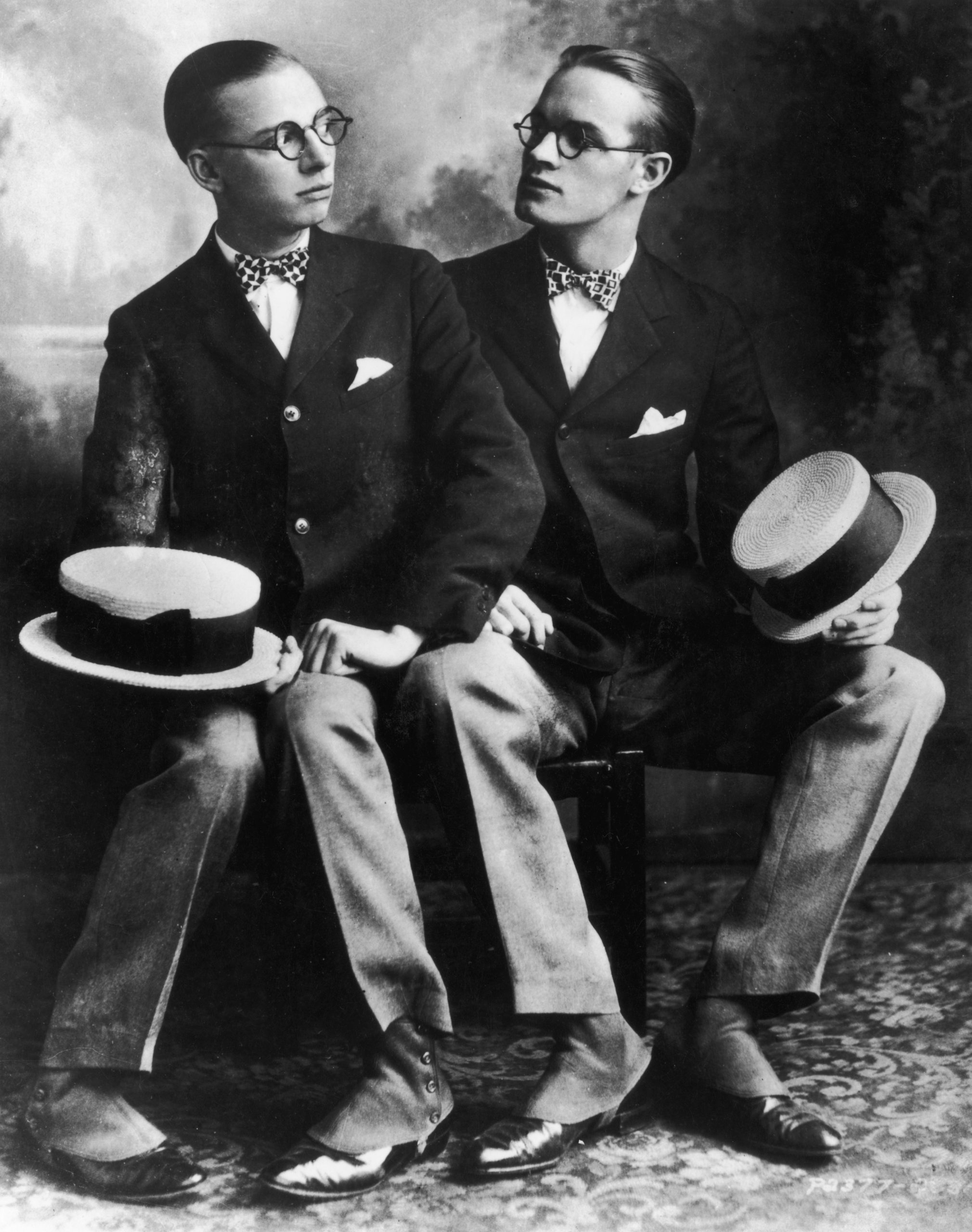
The Hope & Durbin show
Born in London, Bob Hope started his nearly 80-year career busking on streetcars and boxing for cash before starting a vaudeville act with a friend from dancing school, Lloyd Durbin. Vaudeville was a mix of dancing, physical comedy, and comedic skits often at the expense of ethnic or racial groups. Hope and Durbin used this historical photo in matching spats, boaters, glasses, and bow ties as promotion for their act.
36 / 51

The rise of fascism in Italy
This photo shows Benito Mussolini, otherwise known as "Il Duce," attending a fascist meeting in Rome. Later in the year, he was elected to the Italian Parliament for the first time, paving the way for his appointment to Prime Minister the following year, and the eventual establishment of a totalitarian state.
RELATED: Iconic Photos from Protests
37 / 51
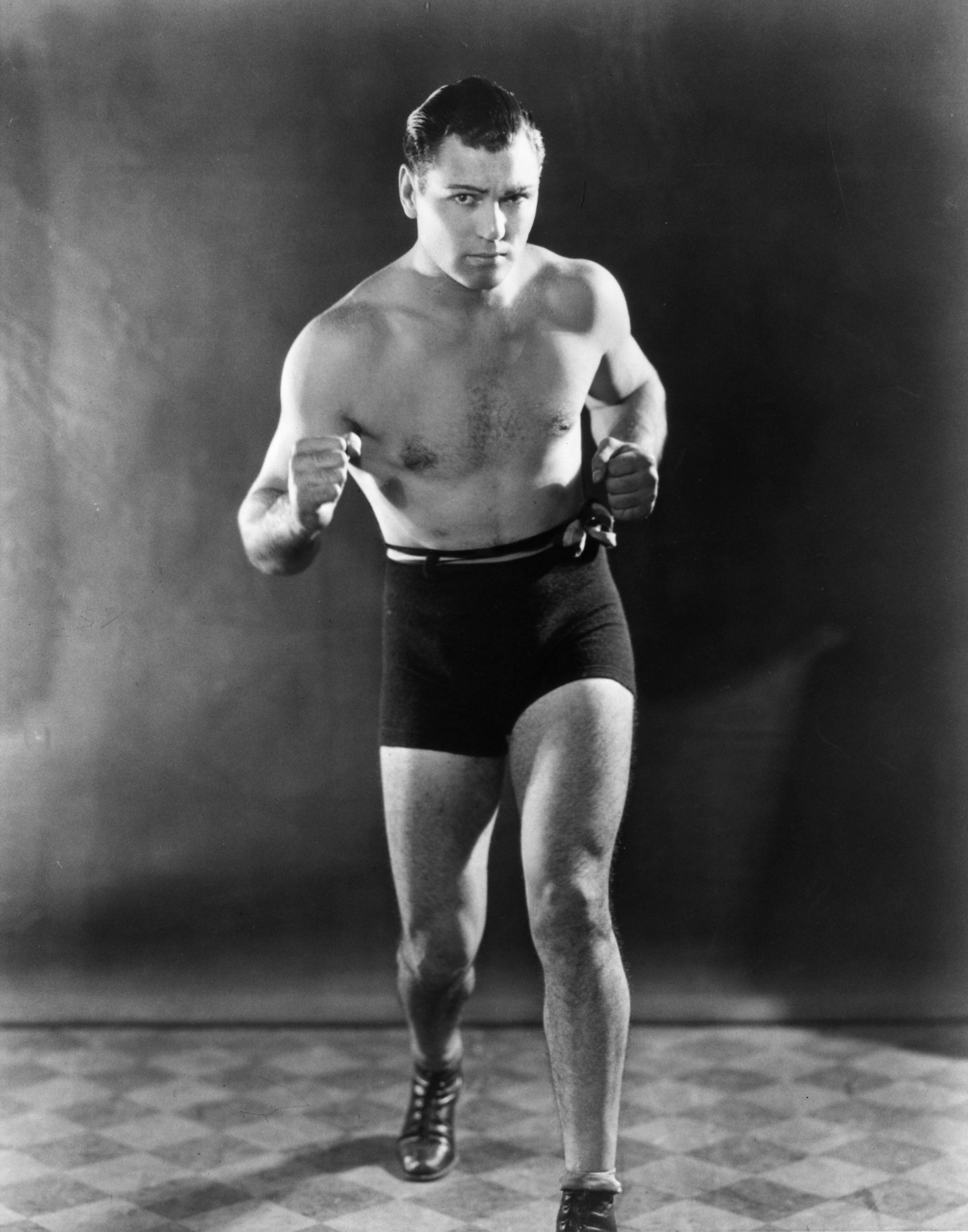
Jack Dempsey
Dempsey was one of the most successful boxers of the 20th century. His 1921 heavyweight champion title defense fight against French boxer Georges Carpentier generated the first million-dollar profit from ticket sales in boxing history, with a crowd of 91,000 watching the fight.
38 / 51
Igor Stravinsky
Famed Russian-American composer Igor Stravinsky is best known for his ballets "The Firebird," "Petrushka," and "The Rite of Spring." In 1921, Stravinsky was living in France with his family and working on "Trois mouvements de Petrouchka," piano excerpts from "Petrushka" for the pianist Artur Rubinstein. He would move to the United States in 1939.
39 / 51
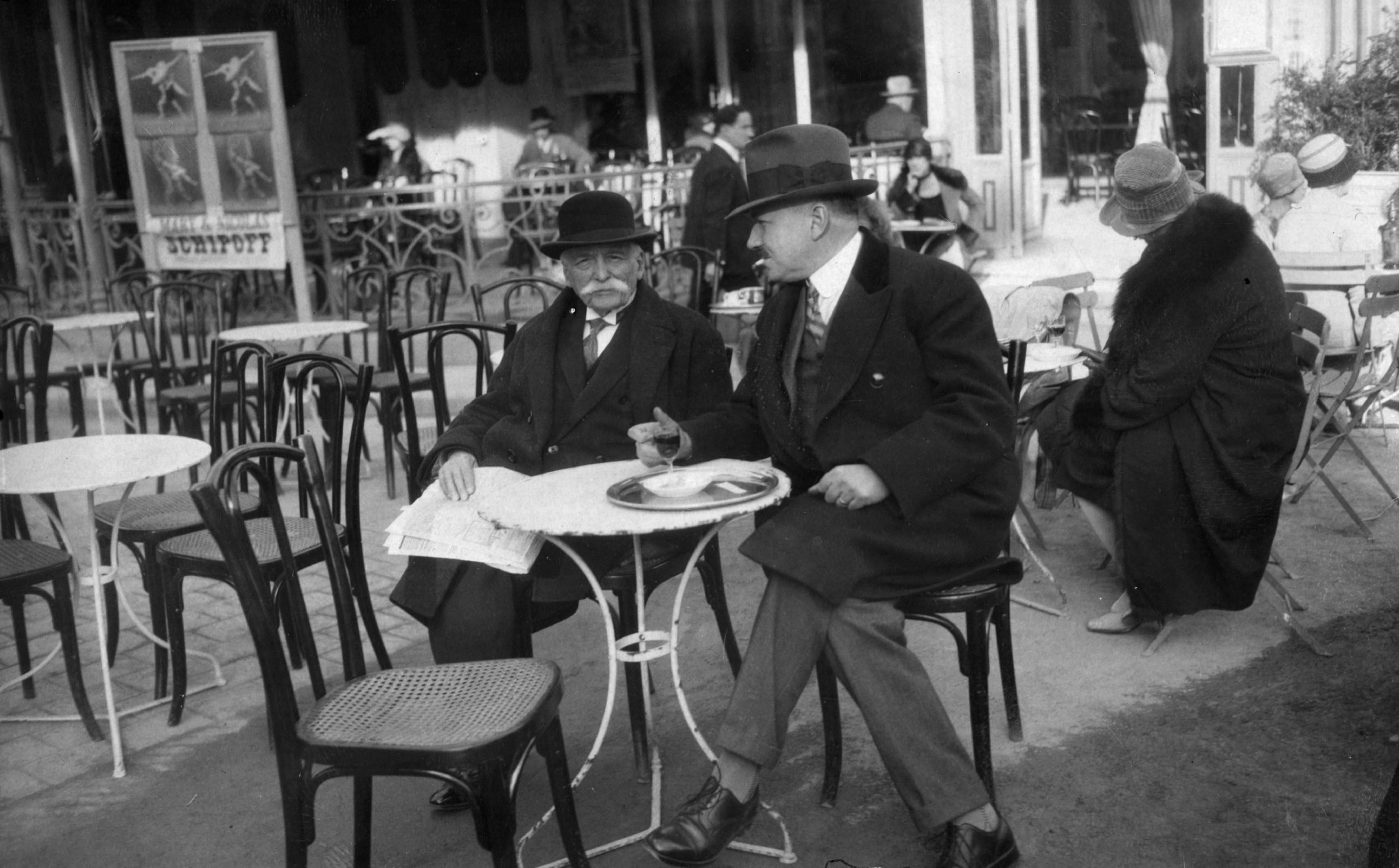
The "King of Kitchens"
French chef, writer, and restaurateur Auguste Escoffier revolutionized traditional French recipes and cooking techniques, as well as the world of kitchen management and restaurants. This historical photo shows him enjoying a break in a Paris café. His most famous book, Le Guide Culinaire is still in use in kitchens and cooking schools around the world.
40 / 51

The birth of Aston Martin
In 1914, Lionel Martin and his partner Robert Bamford registered a self-built car in the Aston Clinton Hillclimb up Aston Hill in Aston Clinton, Buckinghamshire. Their success led them to form a car company and name it Aston Martin.
41 / 51
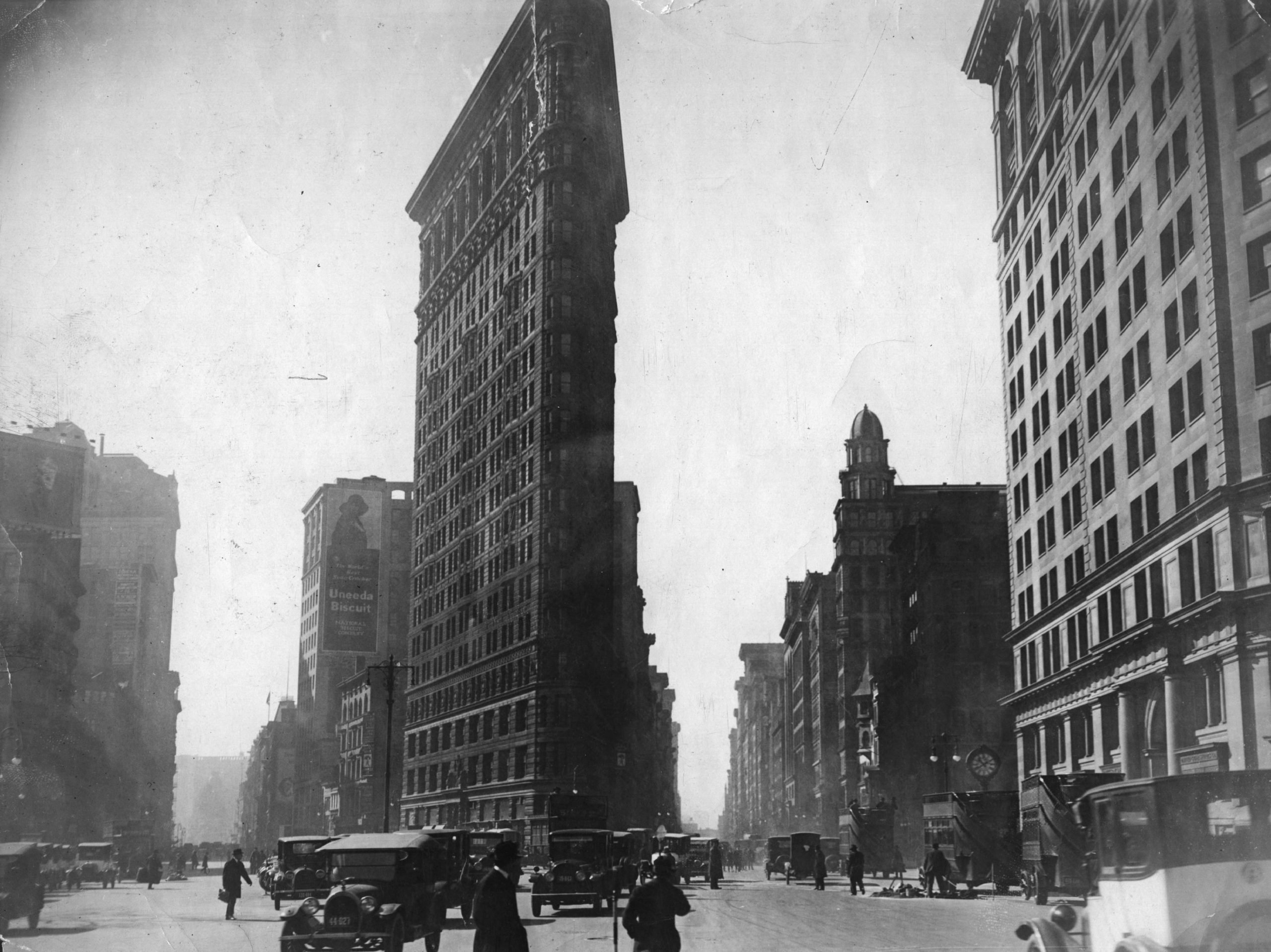
The Flatiron Building
Built in 1902, the famous triangular Flatiron Building anchors the block where Fifth Avenue, Broadway, and East 22nd Street meet in New York City. The name comes from the building's resemblance to a cast-iron clothes iron. From 1911 until it was forced to close because of Prohibition, a popular French restaurant operated out of the basement that was among the first venues of its kind to allow a Black jazz band to perform.
RELATED: Photos of Historical Landmarks Under Construction
42 / 51
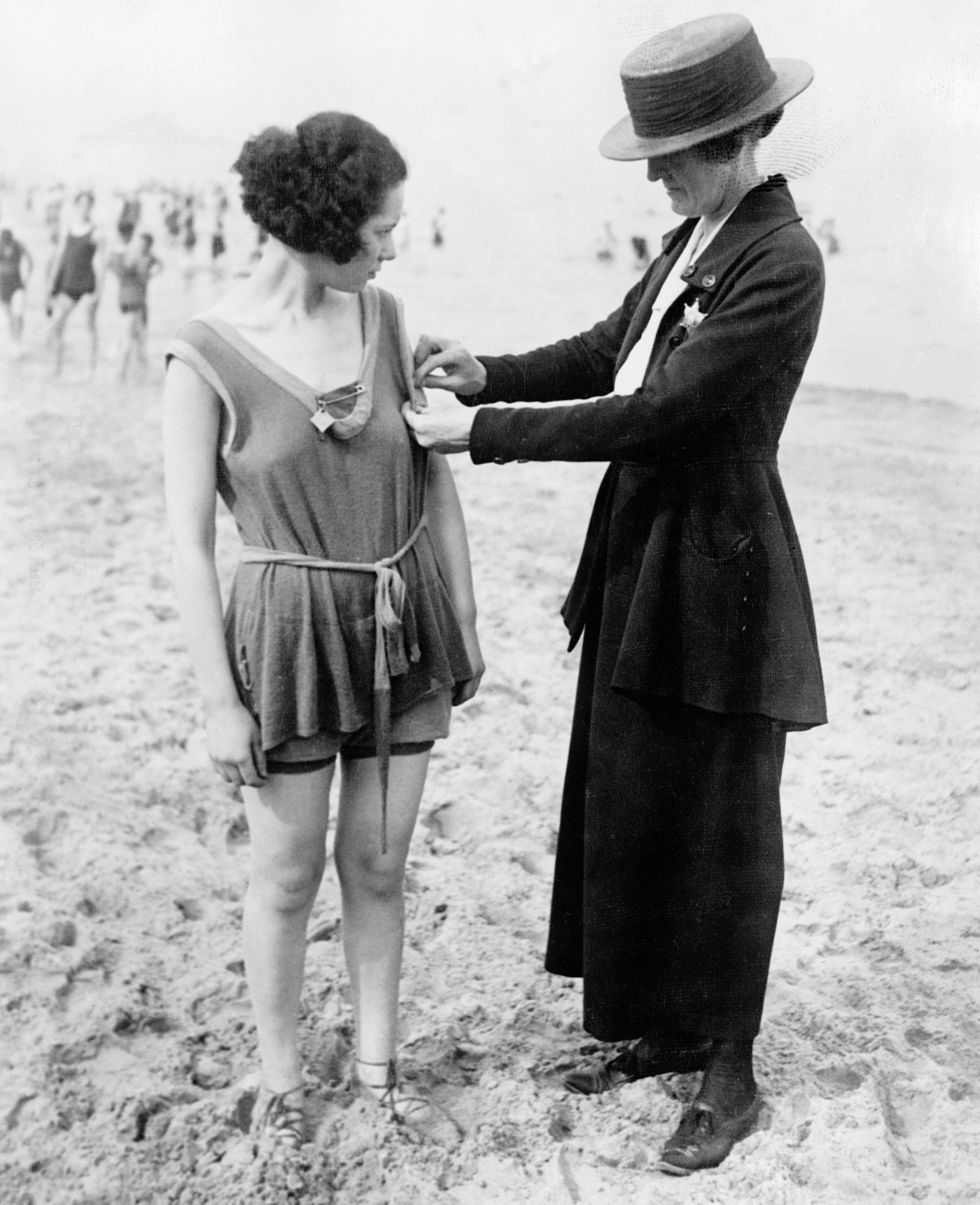
Checking for length
This 1921 picture shows a Chicago policewoman checking for a violation of the bathing-suit-length laws. Back then, your suit could not be more than six inches above the knee! Of course, these rules only applied to women: Men were free to wear trunks cut high on the thigh. This state of affairs lasted until 1946, when a French mechanical engineer named Louis Reard invented the bikini, although it didn't catch on until the 1960s.
43 / 51
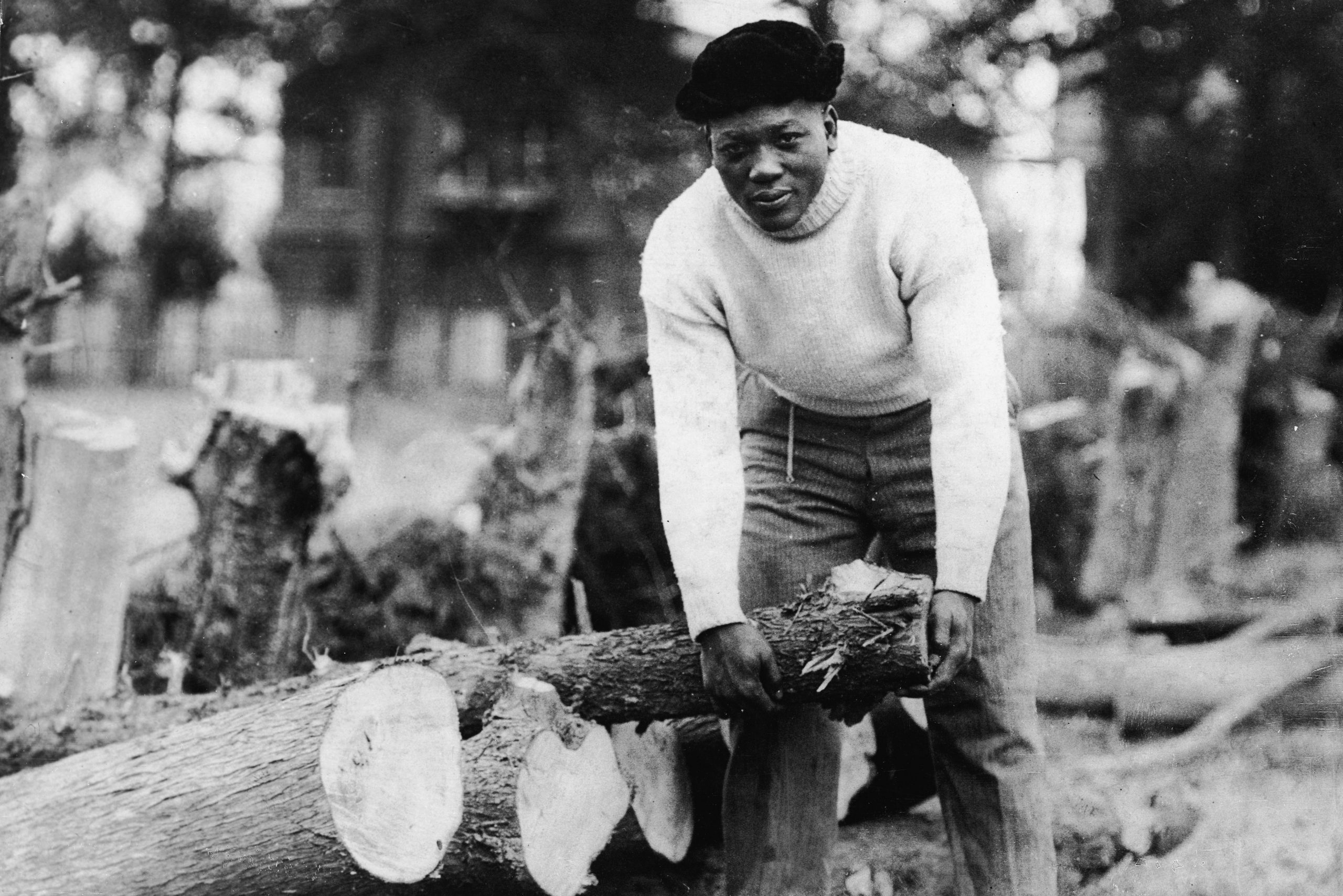
Jack Johnson, the "Galveston Giant"
Jack Johnson was one of the most successful and famous boxers of the 20th century, as well as the first Black American to become World Heavyweight Champion. In this photo, he is using his immense strength to do some winter chores. He was a mainstay in the majority-Black New York City neighborhood of Harlem, influential in the Harlem Renaissance, and deeply important for his prominence and popularity despite ongoing racism in America.
44 / 51
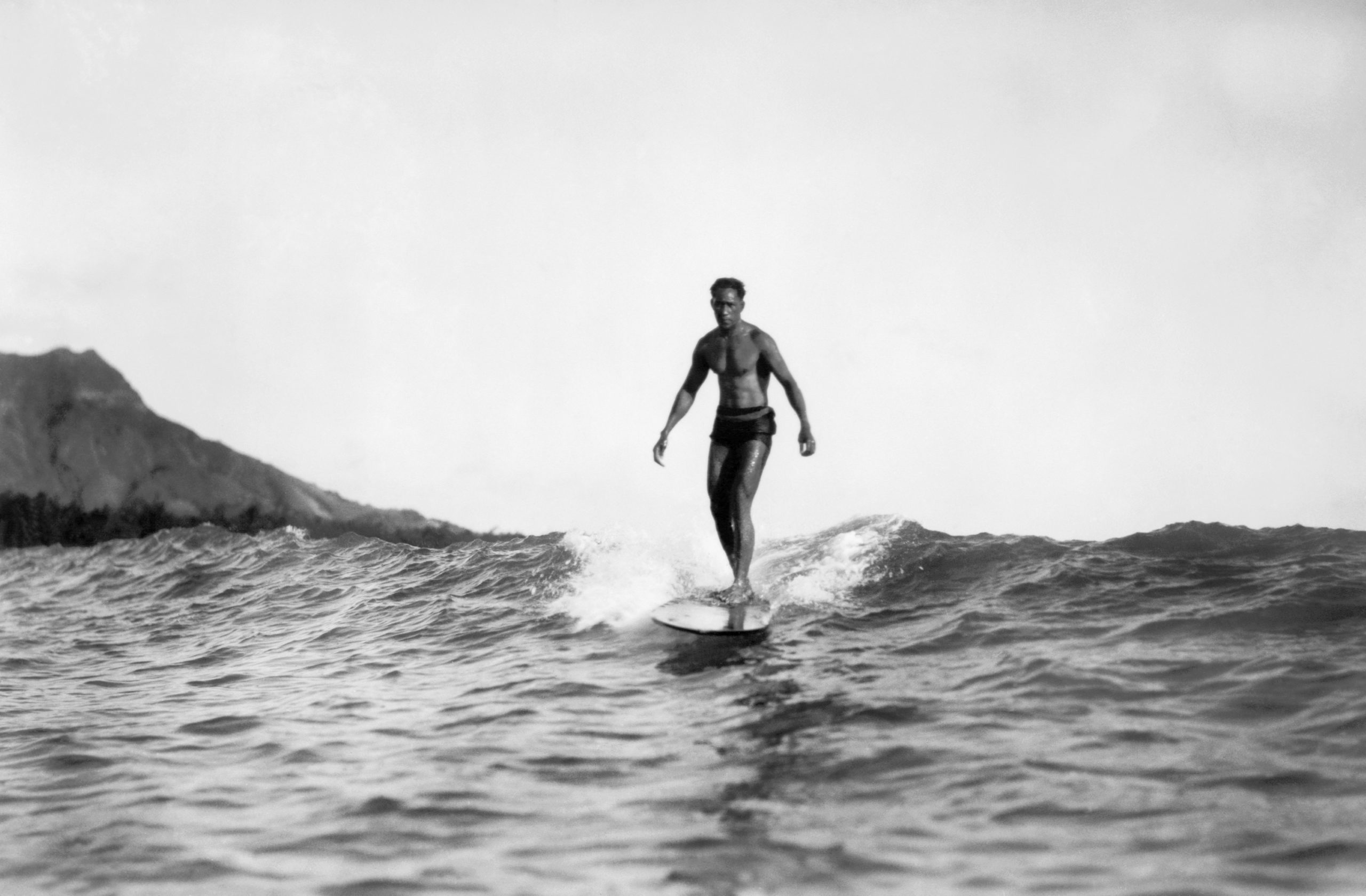
The Big Kahuna
Duke Kahanamoku, otherwise known as "The Big Kahuna," was a Native Hawai'ian Olympic medal-winning swimmer. He was also the man who introduced the ancient Hawai'ian sport of surfing to the wider world. This historical photo shows him hanging ten off the coast of Hawai'i. In 1925, he even used his surfboard to rescue eight drowning fishermen from a fishing vessel off Newport Beach, California.
RELATED: Photos That Stand the Test of Time
45 / 51
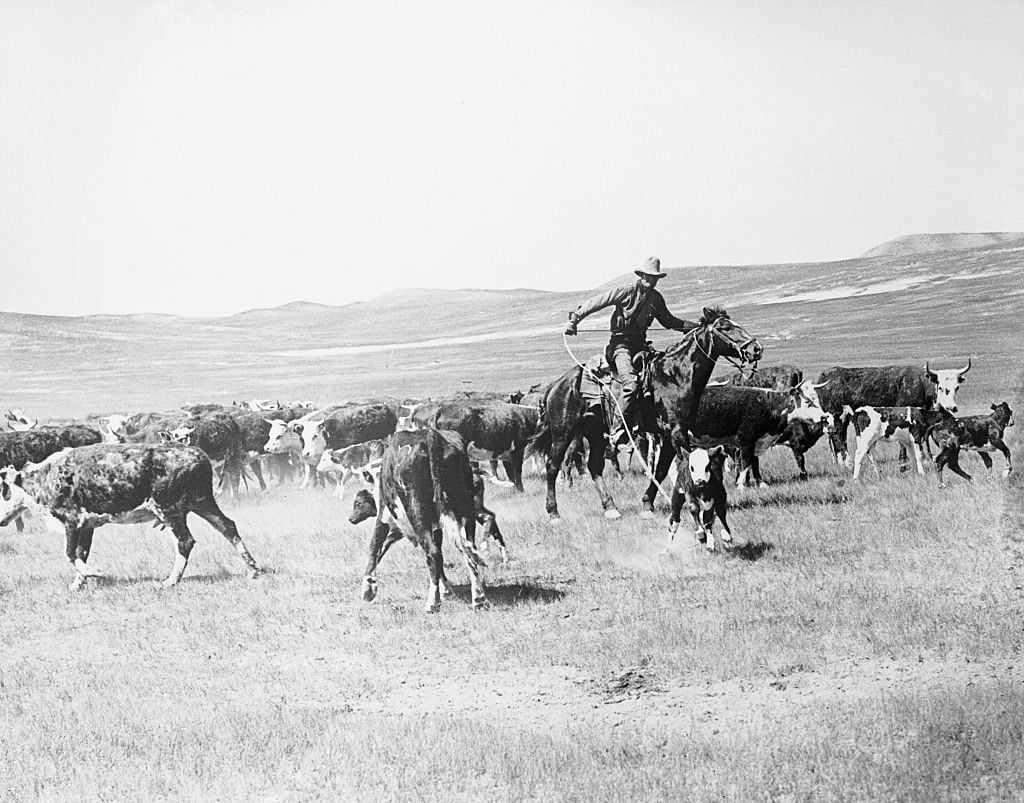
Cowboy herding cattle
This historical photo shows the Z-T Ranch in Pitchfork Park County, Wyoming. The Z-T was part of the Pitchfork Ranch, an enormous and extremely popular dude ranch made famous by the photographs of Charles Belden. Belden's romantic historical photos of the West helped to popularize the idea of the ranch lifestyle and form the cultural story of places like Wyoming.
46 / 51
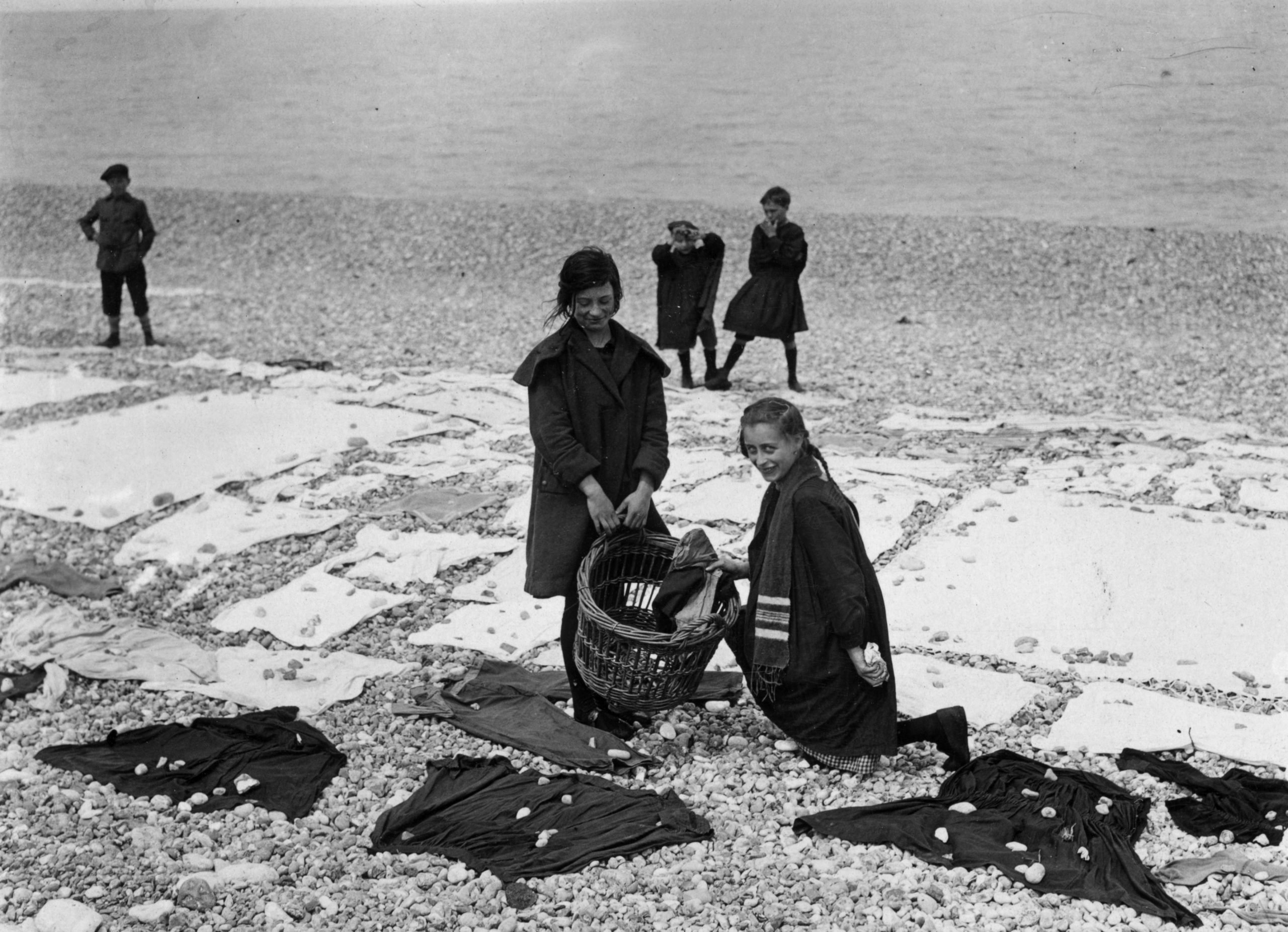
Washing day
With the advent of the automatic washing machine still 16 years away (in 1937), these French women would have washed their clothes by hand. This historical photo shows them weighing the freshly washed clothes down with pebbles, to allow them to dry without blowing away in the strong winds of Northern France.
47 / 51
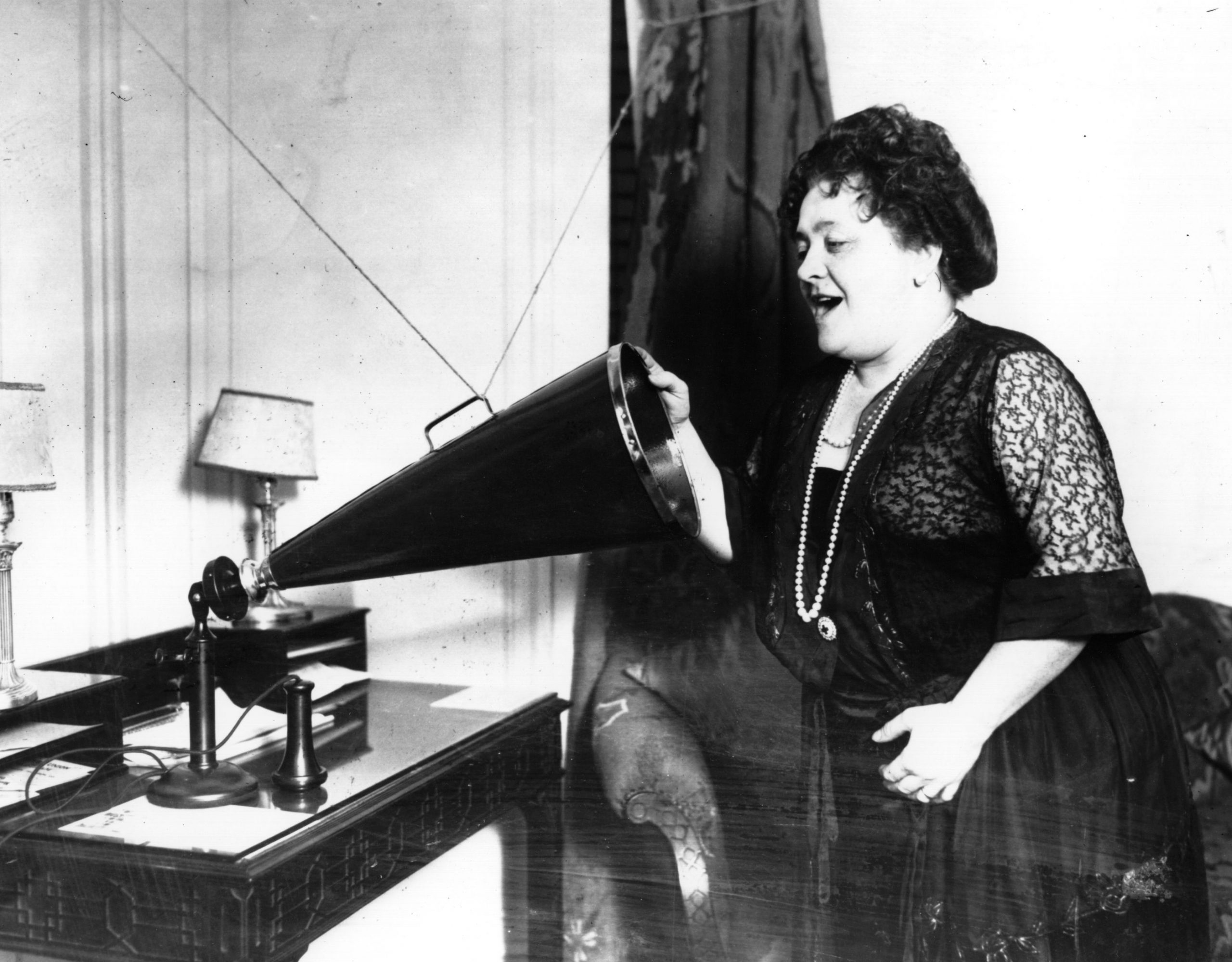
Luisa Tetrazzini
Tetrazzini was an internationally famous Italian coloratura soprano. She made several acclaimed recordings, as shown in this historical photo. Tetrazzini was known for her amazing vocal technique and ability to hit an F note above high C. She is also immortalized in a popular pasta dish from her favorite city, San Francisco.
48 / 51

President Warren Harding
Republican Warren Harding was the 29th President of the United States, serving from 1921-1923. His reputation was marred by bribery and adultery scandals uncovered after his premature death from a heart attack. This historical photo shows him shortly after being sworn in. Vice President Calvin Coolidge succeeded him as president.
RELATED: Surprising Presidential Firsts
49 / 51

Bombing of the USS Alabama
The USS Alabama joined the United States Navy in 1900 and spent her first few years engaged in peacetime training. In World War I, she took on a role as a training ship and after the war was used as a target for aerial bomb testing. The goal of the tests was to ascertain the need for naval aviation. USS Alabama was sunk by bombs in September of 1921, as this historical photo shows.
50 / 51
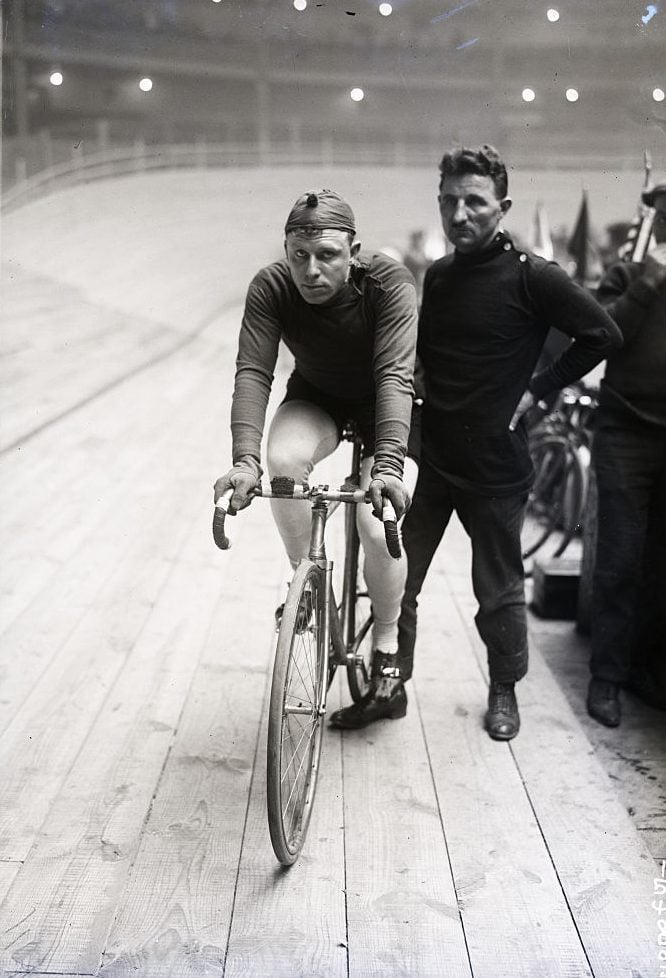
Six Days of New York
Several times a year from 1899-1961 the Six Days of New York cycling event was held, as indicated, over six days in the velodrome at Madison Square Garden in New York City. A team of two or three men alternate racing in a relay, each team endeavoring to complete more laps than the others. Australian Alfred Goullet (pictured left) is tied for the most wins, at eight.
51 / 51

Kensal Green, London
The sweet little houses in this historical photo were built in northwest London, England after the First World War. As the population grew, houses were built according to a blueprint to save on costs, building time, and space. Most of the post-WWI residents were Irish immigrants, and the neighborhood retains an Irish legacy today.
Next: The Most Historic Landmark in Every State
Originally Published: May 17, 2021
Source: https://www.rd.com/list/historical-photos/
0 Response to "Antique Photos of People Doing Funny Things"
Postar um comentário